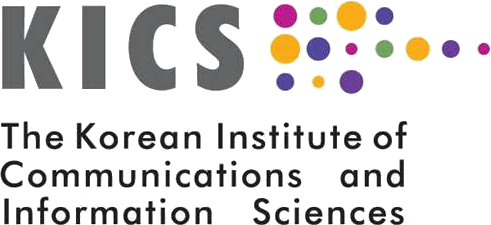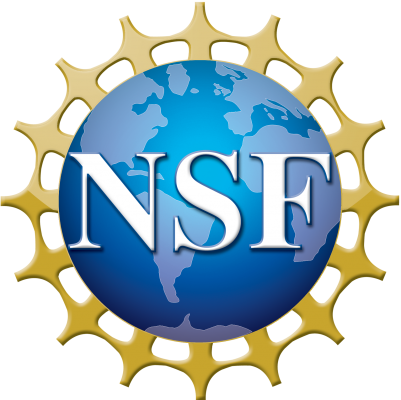IW-1 : 6G Vision and Enablers
Tuesday, May 17 11:00 - 12:30 / Location: Auditorium, Coex
Organizer : Juho Lee (Fellow, Samsung Electronics, Korea)
Presenters :
Amitava Ghosh (Nokia Fellow, Nokia, USA) "On the Path to 6G : Industry Alignment and Collaboration is key to bring it to life"
Tingfang Ji (VP of Engineering, Qualcomm, USA) "Technology Advancements on the Path to 6G"
Eddy Kwon (Corporate EVP, Samsung Electronics, Korea) "Technologies for Hyper Connected Experience for All in 6G"
Jianmin Lu (Executive Director, Huawei, China) "The road to the next generation wireless network"
Abstract :
While the mobile industry is now focusing on the realization of what 5G technologies promised, we can see that initial consideration about the next generation of mobile communications, i.e., 6G, is already happening. Considering the general trend of introducing new services with higher requirements over different generations of communication systems, it would be natural to expect that 6G technologies need to be developed to envision more advanced services than 5G. Examples of such new services include truly immersive XR, mobile hologram, and digital replica. Initial investigation already suggests rough estimates of performance requirements for 6G such as 1 Tbps peak rate, 1 Gbps user-experienced data rate, and 0.1 ms air latency. Use of terahertz spectrum would naturally be considered to provide such high data rate. Novel approaches, e.g., reconfigurable intelligent surfaces, further advanced duplex technologies, use of AI/ML, would need to be considered to satisfy the expected performance requirements. In this proposed industry presentation session, industry experts will present their views on 6G vision and enablers.
Biography :
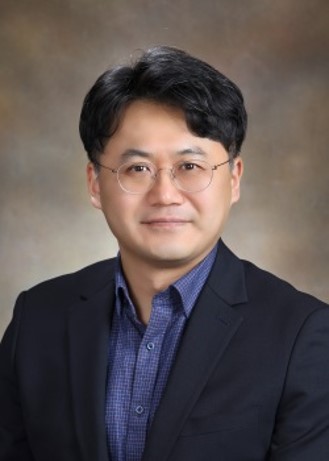 Juho Lee is currently a Fellow (EVP of technology) at Samsung Electronics, where he is leading research and standardization for mobile communications. He joined Samsung Electronics in 2000 and has worked on 3G, 4G, and 5G technologies. His current research focus is on preparation of future technologies such as 5G evolution and 6G. He was a vice chairman of 3GPP RAN WG1 from February 2003 to August 2009 and chaired LTE/LTE-Advanced MIMO sessions. He received his Ph.D. degree in electrical engineering from Korea Advanced Institute of Science and Technology (KAIST), Korea, in 2000. Dr. Lee is a Fellow of IEEE.
Juho Lee is currently a Fellow (EVP of technology) at Samsung Electronics, where he is leading research and standardization for mobile communications. He joined Samsung Electronics in 2000 and has worked on 3G, 4G, and 5G technologies. His current research focus is on preparation of future technologies such as 5G evolution and 6G. He was a vice chairman of 3GPP RAN WG1 from February 2003 to August 2009 and chaired LTE/LTE-Advanced MIMO sessions. He received his Ph.D. degree in electrical engineering from Korea Advanced Institute of Science and Technology (KAIST), Korea, in 2000. Dr. Lee is a Fellow of IEEE.
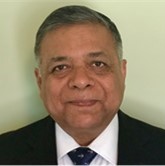 Amitabha (Amitava) Ghosh is a Nokia Fellow and works at Nokia Standards and Strategy. He joined Motorola in 1990 after receiving his Ph.D in Electrical Engineering from Southern Methodist University, Dallas. Since joining Motorola he worked on multiple wireless technologies starting from IS-95, cdma-2000, 1xEV-DV/1XTREME, 1xEV-DO, UMTS, HSPA, 802.16e/WiMAX and 3GPP LTE. He has 60 issued patents, has written multiple book chapters and has authored numerous external and internal technical papers. He is currently working on 5G Evolution and 6G technologies. Recently, he was elected chair of the NextGA (an US 6G initiative) National Roadmap Working Group. His research interests are in the area of digital communications, signal processing and wireless communications. He is the recipient of 2016 IEEE Stephen O. Rice and 2017 Neal Shephard prize, member of IEEE Access editorial board and co-author of the book titled “Essentials of LTE and LTE-A”.
Amitabha (Amitava) Ghosh is a Nokia Fellow and works at Nokia Standards and Strategy. He joined Motorola in 1990 after receiving his Ph.D in Electrical Engineering from Southern Methodist University, Dallas. Since joining Motorola he worked on multiple wireless technologies starting from IS-95, cdma-2000, 1xEV-DV/1XTREME, 1xEV-DO, UMTS, HSPA, 802.16e/WiMAX and 3GPP LTE. He has 60 issued patents, has written multiple book chapters and has authored numerous external and internal technical papers. He is currently working on 5G Evolution and 6G technologies. Recently, he was elected chair of the NextGA (an US 6G initiative) National Roadmap Working Group. His research interests are in the area of digital communications, signal processing and wireless communications. He is the recipient of 2016 IEEE Stephen O. Rice and 2017 Neal Shephard prize, member of IEEE Access editorial board and co-author of the book titled “Essentials of LTE and LTE-A”.
 Tingfang Ji joined Qualcomm in 2003 and is currently a VP of Engineering on Wireless Research. He leads a flagship research project on 5G NR design/standardization, pre-commercial IODT/trials, experimental macro networks, and long-term pre-6G research. Before joining Qualcomm, Tingfang was a member of the technical staff at Bell Labs. As an inventor, he has more than 600 granted US patents. Tingfang received his Ph.D. degree in E.E. from the University of Michigan, Ann Arbor in 2001, and also received a B.Sc. from Tsinghua University, Beijing.
Tingfang Ji joined Qualcomm in 2003 and is currently a VP of Engineering on Wireless Research. He leads a flagship research project on 5G NR design/standardization, pre-commercial IODT/trials, experimental macro networks, and long-term pre-6G research. Before joining Qualcomm, Tingfang was a member of the technical staff at Bell Labs. As an inventor, he has more than 600 granted US patents. Tingfang received his Ph.D. degree in E.E. from the University of Michigan, Ann Arbor in 2001, and also received a B.Sc. from Tsinghua University, Beijing.
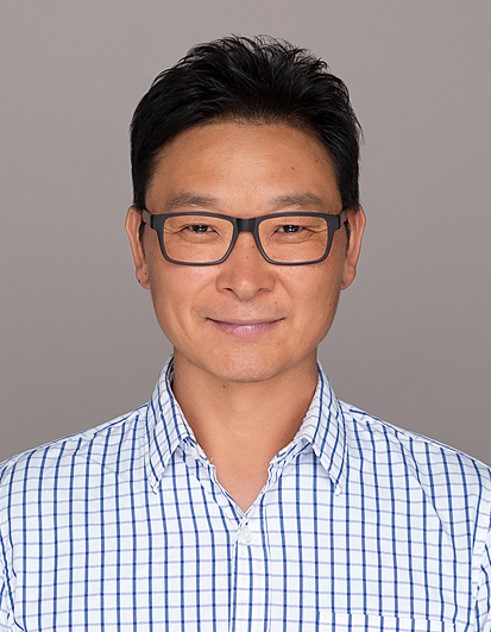
Eddy (Hwan-Joon) Kwon is currently a Corporate EVP at Samsung Electronics, where he is heading Samsung’s 6G research. He was at Qualcomm from 2020 to 2022 where he led system design and standardization in a flagship 5G & 6G research program. From 2013 to 2019, he was leading 3GPP RAN research & standardization and industry coalition at Intel. From 2000 to 2013, he worked for Samsung with emphasis on 3G and 4G system design, performance evaluation, and standardization of 3GPP, 3GPP2, and DVB-T2 systems. He served as the chairman of Technology Working Group in North American Next Generation Alliance (NGA) from 2021 to 2022. He received his PhD degree in electrical engineering from University of California, San Diego in 2013.
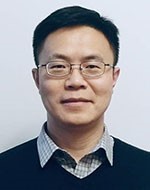 Jianmin Lu joined the Huawei Technologies in 1999. During the last two decades, he conducted various researches on wireless communications especially on physical layer and MAC layer and developed 3G, 4G and 5G products. He received more than 50 patents during the research. He was deeply involved in 3GPP2 (EVDO/UMB), WiMAX/802.16m and 3GPP (LTE/NR) standardization and contributed several key technologies such as flexible radio frame structure, radio resource management and MIMO. His current research interest is in the area of signal processing, protocol and networking for the next generation wireless communication. He is currently Executive Director of Huawei Wireless Technology Lab.
Jianmin Lu joined the Huawei Technologies in 1999. During the last two decades, he conducted various researches on wireless communications especially on physical layer and MAC layer and developed 3G, 4G and 5G products. He received more than 50 patents during the research. He was deeply involved in 3GPP2 (EVDO/UMB), WiMAX/802.16m and 3GPP (LTE/NR) standardization and contributed several key technologies such as flexible radio frame structure, radio resource management and MIMO. His current research interest is in the area of signal processing, protocol and networking for the next generation wireless communication. He is currently Executive Director of Huawei Wireless Technology Lab.
IW-2 : Technologies & Applications of Full Duplex Radio (FDR)
Tuesday, May 17 11:00 - 12:30 / Location: E6, Conference Room E, Coex
Organizer : Thomas Haustein (Fraunhofer Heinrich Hertz Institute, Berlin, Germany)
Presenters :
Youngwoo Yun (LG Electronics) "Duplex evolution in 3GPP: Full Duplex Radio: Opportunities, Challenges and Future Perspective of FDR Technologies"
Gustav Wikström (Ericsson Research) "Full duplex in 5G and 6G"
Jin-Kyu Han (Samsung Electronics) “XDD (Cross-Division Duplex), Advanced Duplex Technology”
Philippe Guillemette (Huawei) ”Full-Duplex Hybrid Beamforming for MU-mMIMO in Factory Applications”
Abstract :
The rollout of 5G systems all over the world comes with an increasing demand for coverage and capacity for new use cases while spectral and energy efficiency as well as latency play an increasing role. Both academia and industry are exploring actively into future technologies for 5G advanced and 6G networks. Full Duplex Radio (FDR) allows a communication device to simultaneously transmit and receive wireless signals on the same channel (frequency band). Enabled by means of self-interference cancelation, FDR can significantly increase the throughput for each allocated channel and therefore increase cell and system capacity and inherently reduce transmit buffer waiting time for data transmissions and therefore to reduce round-trip latencies, associated with acknowledgments or channel feedback. The benefits are enhanced link performance for in-band and out-of-band relaying, device-to-device links as well as in base station – mobile terminal links. In 3GPP, some Study Item (SI) proposals are submitted for Release 18 standardization. Benefits and challenges of applying Full Duplex to Wi-Fi standards have recently been discussed in IEEE802.11. In academia, Full Duplex Emerging Technology Initiative (ETI) in IEEE ComSoc and several international workshops discuss on the feasibility of applying FDR for next generation cellular networks have recently been organized. FDR will be an important role in future wireless communication.
Biography :
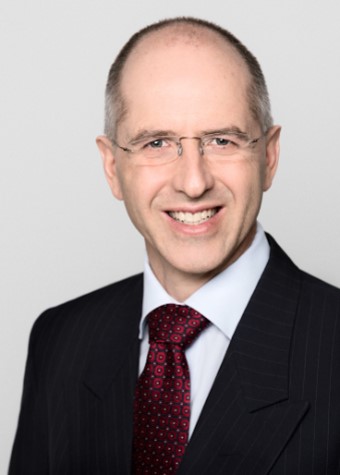 Thomas Haustein received the Dr.-Ing. (Ph.D.) degree in mobile communications from the University of Technology Berlin, Germany, in 2006. Since 1997, he was with the Fraunhofer Institute for Telecommunications, Heinrich Hertz Institute (HHI), Berlin, where he worked on wireless infrared systems and radio communications with multiple antennas and OFDM. He focused on real-time algorithms for baseband processing and advanced multiuser resource allocation. From 2006 till 2008, he was with Nokia Siemens Networks, where he conducted research for 4G-LTE early prototyping. Since 2009 he is heading the Wireless Communications Department at Fraunhofer HHI focusing on 5G-NR and Industrial Wireless and is actively involved in 3GPP standardization.
Thomas Haustein received the Dr.-Ing. (Ph.D.) degree in mobile communications from the University of Technology Berlin, Germany, in 2006. Since 1997, he was with the Fraunhofer Institute for Telecommunications, Heinrich Hertz Institute (HHI), Berlin, where he worked on wireless infrared systems and radio communications with multiple antennas and OFDM. He focused on real-time algorithms for baseband processing and advanced multiuser resource allocation. From 2006 till 2008, he was with Nokia Siemens Networks, where he conducted research for 4G-LTE early prototyping. Since 2009 he is heading the Wireless Communications Department at Fraunhofer HHI focusing on 5G-NR and Industrial Wireless and is actively involved in 3GPP standardization.
 Youngwoo Yun received his Ph.D. degree in Electronic Engineering from Yonsei University, Korea, in 1998. After his Ph.D. course, he joined LG Electronics in 1998 and since then he has been working as standard engineer, actively contributing to various 3G/4G standardization activities in 3GPP/3GPP2 such as CDMA2000, W-CDMA, HSDPA, HSUPA, LTE and, LTE-Advanced. He is currently senior research fellow (vice president) in LG Electronics, Seoul, leading 5G/5G-Advanced standardization activities of LG Electronics in 3GPP. He is currently the chairman of project group 1102 in TTA, which is in charge of standardization of wireless mobile communication in Korea.
Youngwoo Yun received his Ph.D. degree in Electronic Engineering from Yonsei University, Korea, in 1998. After his Ph.D. course, he joined LG Electronics in 1998 and since then he has been working as standard engineer, actively contributing to various 3G/4G standardization activities in 3GPP/3GPP2 such as CDMA2000, W-CDMA, HSDPA, HSUPA, LTE and, LTE-Advanced. He is currently senior research fellow (vice president) in LG Electronics, Seoul, leading 5G/5G-Advanced standardization activities of LG Electronics in 3GPP. He is currently the chairman of project group 1102 in TTA, which is in charge of standardization of wireless mobile communication in Korea.
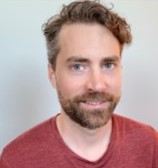 Gustav Wikström received the Ph.D. degree from Stockholm University, in 2009. After his postdoctoral research at the University of Geneva, he joined Ericsson, in 2011. He is currently a Research Leader at Ericsson Research, Sweden.
Gustav Wikström received the Ph.D. degree from Stockholm University, in 2009. After his postdoctoral research at the University of Geneva, he joined Ericsson, in 2011. He is currently a Research Leader at Ericsson Research, Sweden.
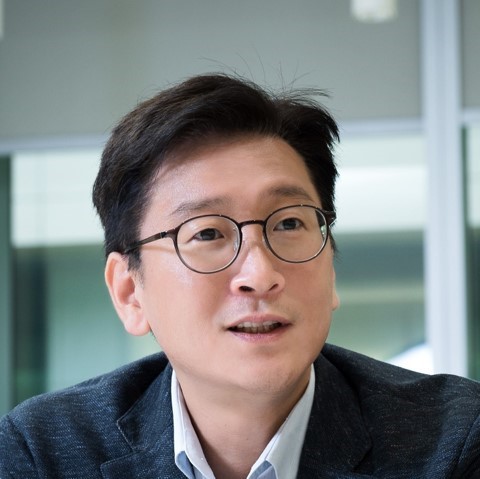 Jin-Kyu Han is a Corporate Vice President at Samsung Electronics and heads Standards Research Team at Samsung Research. Dr. Han as a standardization expert has actively contributed to shaping the cellular communications standards such as cdma2000, LTE, and 5G since his career began at Samsung in 2003. He has also participated in research activities for next generation communications systems such as 5G mmWave PoC and 6G Vision. He represented Korea at IEC as a member of its SMB (Standardization Management Committee) from 2018 to 2020.
Jin-Kyu Han is a Corporate Vice President at Samsung Electronics and heads Standards Research Team at Samsung Research. Dr. Han as a standardization expert has actively contributed to shaping the cellular communications standards such as cdma2000, LTE, and 5G since his career began at Samsung in 2003. He has also participated in research activities for next generation communications systems such as 5G mmWave PoC and 6G Vision. He represented Korea at IEC as a member of its SMB (Standardization Management Committee) from 2018 to 2020.
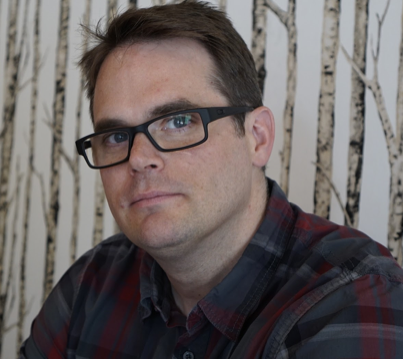 Philippe Guillemette is currently a principal engineer at the Canada Research Centre of Huawei Technologies in Ottawa. He has over 20 years of experience in research and development in wireless communication technology spanning various terrestrial and satellite based communication systems. He has a wide technical knowledge base covering digital signal processing in wireless physical layer applications as well as radio performances of electronic devices. His recent areas of research include CFR/DPD and self-interference cancellation of M-MIMO related full duplex technologies and their wireless applications.
Philippe Guillemette is currently a principal engineer at the Canada Research Centre of Huawei Technologies in Ottawa. He has over 20 years of experience in research and development in wireless communication technology spanning various terrestrial and satellite based communication systems. He has a wide technical knowledge base covering digital signal processing in wireless physical layer applications as well as radio performances of electronic devices. His recent areas of research include CFR/DPD and self-interference cancellation of M-MIMO related full duplex technologies and their wireless applications.
IW-3 : HCS: Harmonized Communication and Sensing
Tuesday, May 17 14:00 - 15:30 / Location: E5, Conference Room E, Coex
Organizer : Yi Wang (Huawei Technologies Co., Ltd.)
Presenters :
Joerg Widmer (IMDEA Networks, Spain) "High-accuracy joint communication and sensing at mm-wave frequencies"
Claudio da Silva (Meta Platforms Inc., USA) "Wi-Fi Sensing: Standardization and Opportunities"
Zhenfei Tang (Huawei Technologies Co., Ltd.) "Harmonized communication and sensing for 5G Advanced system"
Henk Wymeersch (Chalmers University of Technology, Sweden) "Positioning towards 6G: potential and challenges"
Abstract :
Wireless communications are paving the way from a communication pipe to harmonized communication and sensing (HCS)which could provide high-resolution sensing, high-accuracy localization, human imaging, and environment reconstruction capabilities. The sensing can not only open the door to deliver intelligent services to users but also provide an efficient method to improve network performance. Recently HCS technology is discussed in 5G-Advanced system, IEEE 802.11bf, 6G white papers, and a series of publications. Such widely research will definitely accelerate the HCS to the way of industrial commercialization in next years. In this panel, we will investigate the research progress of HCS focusing on the fundamental issues including use case, challenges, key techniques, and industrial progress in standard and testbeds. The panel is expected to provide common views on future directions.
Biography :
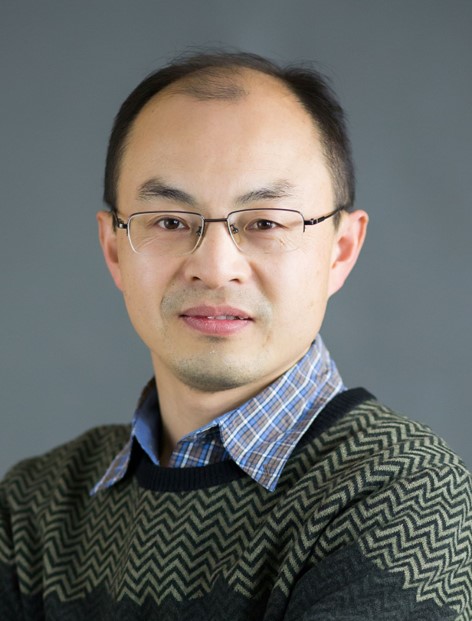 Yi Wang is a research expert at Huawei Technologies Co., Ltd. in Shanghai. He received the M.S.E.E and Ph.D degrees from information engineering department at Beijing University of Posts & Telecommunications, China, in 1997 and 2000 respectively. He was one of the initial researchers of FuTURE program in 863 when he worked in Tsinghua University during 2000-2002. He visited the University of Kiel in Germany as senior researcher during 2002-2004. Since 2005 he joined Huawei Technologies Co., Ltd. in Shanghai he led a series of research projects on LTE/LET-Advanced and 5G systems. Currently he is leading 5G positioning and sensing research in Huawei. Dr. Yi Wang owns over 150+ patents and 90+ papers. Many patents have been realized in LTE/LTE-Advanced and 5G products and adopted in 3GPP and IEEE802.11 standards.
Yi Wang is a research expert at Huawei Technologies Co., Ltd. in Shanghai. He received the M.S.E.E and Ph.D degrees from information engineering department at Beijing University of Posts & Telecommunications, China, in 1997 and 2000 respectively. He was one of the initial researchers of FuTURE program in 863 when he worked in Tsinghua University during 2000-2002. He visited the University of Kiel in Germany as senior researcher during 2002-2004. Since 2005 he joined Huawei Technologies Co., Ltd. in Shanghai he led a series of research projects on LTE/LET-Advanced and 5G systems. Currently he is leading 5G positioning and sensing research in Huawei. Dr. Yi Wang owns over 150+ patents and 90+ papers. Many patents have been realized in LTE/LTE-Advanced and 5G products and adopted in 3GPP and IEEE802.11 standards.
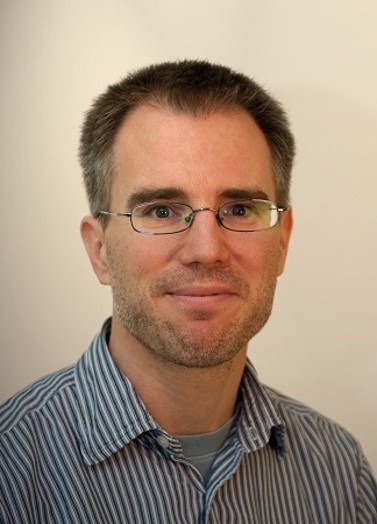 Joerg Widmer is Research Director as well as Research Professor at IMDEA Networks in Madrid, Spain. His research focuses on wireless networks, ranging from extremely high frequency millimeter-wave communication and MAC layer design to mobile network architectures. From 2005 to 2010, he was manager of the Ubiquitous Networking Research Group at DOCOMO Euro-Labs in Munich, Germany, leading several projects in the area of mobile and cellular networks. Before, he worked as post-doctoral researcher at EPFL, Switzerland on ultra-wide band communication and network coding. He was a visiting researcher at the International Computer Science Institute in Berkeley, USA, University College London, UK, and TU Darmstadt, Germany. Joerg Widmer authored more than 200 conference and journal papers and three IETF RFCs, and holds 13 patents. He serves on the editorial board of IEEE Transactions on Mobile Computing, Elsevier Computer Networks and the program committees of several major conferences. He was awarded an ERC consolidator grant, the Friedrich Wilhelm Bessel Research Award of the Alexander von Humboldt Foundation, a Mercator Fellowship of the German Research Foundation, a Spanish Ramon y Cajal grant, as well as nine best paper awards. He is Fellow of the IEEE and Distinguished Member of the ACM.
Joerg Widmer is Research Director as well as Research Professor at IMDEA Networks in Madrid, Spain. His research focuses on wireless networks, ranging from extremely high frequency millimeter-wave communication and MAC layer design to mobile network architectures. From 2005 to 2010, he was manager of the Ubiquitous Networking Research Group at DOCOMO Euro-Labs in Munich, Germany, leading several projects in the area of mobile and cellular networks. Before, he worked as post-doctoral researcher at EPFL, Switzerland on ultra-wide band communication and network coding. He was a visiting researcher at the International Computer Science Institute in Berkeley, USA, University College London, UK, and TU Darmstadt, Germany. Joerg Widmer authored more than 200 conference and journal papers and three IETF RFCs, and holds 13 patents. He serves on the editorial board of IEEE Transactions on Mobile Computing, Elsevier Computer Networks and the program committees of several major conferences. He was awarded an ERC consolidator grant, the Friedrich Wilhelm Bessel Research Award of the Alexander von Humboldt Foundation, a Mercator Fellowship of the German Research Foundation, a Spanish Ramon y Cajal grant, as well as nine best paper awards. He is Fellow of the IEEE and Distinguished Member of the ACM.
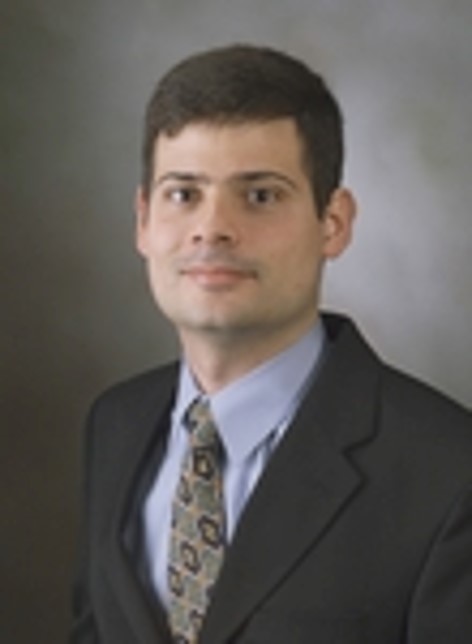
Claudio da Silva is a Wireless Systems Engineer in the Reality Labs group of Meta Platforms (formerly Facebook), an organization focused on building tools that help people feel connected, anytime, anywhere. At Meta Platforms, he is responsible for the standardization of wireless connectivity technologies and for advancing Meta’s spectrum regulatory strategy. He also serves as the Technical Editor of IEEE 802.11bf (WLAN Sensing), a task group currently developing an amendment to the IEEE 802.11 standard that will enhance the ability of Wi-Fi technology to support sensing applications. Before joining Meta Platforms, Dr. da Silva was with Intel Corporation and Samsung Mobile Solutions Lab (MSL). The first years of his professional career were spent at Virginia Tech, where he was an Assistant Professor in the Bradley Department of Electrical and Computer Engineering.
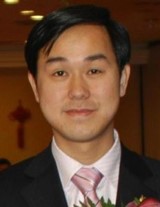
Zhenfei Tang is the senior manager of the 5G evolution research in Huawei. He has been engaged in the research and standardization for 3G, 4G and 5G wireless communications systems since he joined Huawei Technologies Co., Ltd in 2005. Mr. Tang was the major representative of Huawei in IMT-Advanced Promotion Group in China, and he led the promotion of TD-LTE from Huawei. He led 5G radio system design and managed a series of National projects from Huawei. Mr. Tang has more than 100 granted patents in the area of wireless communications. He received his M.S. degree from Beijing University of Posts and Telecommunications in 2004.

Henk Wymeersch is a Professor in Communication Systems with the Department of Electrical Engineering at Chalmers University of Technology, Sweden. He is also affiliated with the FORCE research center on fiber-optic communication, and was the PI of COOPNET, an ERC project on cooperative networks. Prior to joining Chalmers, he was a Postdoctoral Associate during 2006-2009 with the Laboratory for Information and Decision Systems (LIDS) at the Massachusetts Institute of Technology (MIT). Henk Wymeersch obtained the Ph.D. degree in Electrical Engineering/Applied sciences in 2005 from Ghent University, Belgium. For his thesis, he received the 2006 Alcatel Bell Scientific Award. He received a fellowship from the Belgian American Educational Foundation in 2005-2006. He is a member of the IEEE, and served as Associate Editor for IEEE Transactions on Communications (2016-present), IEEE Transactions on Wireless Communications (2013-present), for IEEE Communication Letters (2009-2013) and the Transactions on Emerging Telecommunications Technologies (ETT) (2011-2016). He served as Guest Editor for IEEE Journal on Selected Areas in Communications (JSAC, special issue on Location-aware Radios and Networks), EURASIP Journal on Wireless Communications and Networking (special issue on Localization in Mobile Wireless and Sensor Networks), and for EURASIP Journal on Advances in Signal Processing (special Issue on Signal Processing Techniques for Anywhere, anytime positioning). In 2015, he served as General Chair of the International Conference on Localization and GNSS. He has co-authored over 100 contributions in journals and international conferences, and is the author of Iterative Receiver Design (Cambridge University Press, August 2007). In 2009, he was part of a team that won the L3 Communications Prize at the 2009 Soldier Design Competition, for the practical demonstration of cooperative ultra-wide bandwidth (UWB) localization. Other awards include a best paper award at Globecom 2009 and a NEWCOM++ best paper award in 2010. His research interests include algorithm design for wireless transmission, statistical inference and iterative processing.
IW-4 : Smart City
Wednesday, May 18 11:00 - 12:30 / Location: E6, Conference Room E, Coex
Organizer : Junseok Hwang, Ph.D. (Director, BK21 HRD program of Smart City Global Convergence, Seoul National University, Korea)
Presenters :
Kyung Hoon Kim (PM of Smart City Innovation Project, KT, Korea) "Data Hub Application of Sihueng Smart City Project"
Jennifer Schmitz (CEO, Lattice Industries, Inc., USA) "Planting the SEED: Deploying the Foundation for Global Interconnectivity"
Yonghwan Kim (CEO, Smart Radar System, Inc., Korea) "4D Imaging Radar as a Building Block to Smart Cities"
Michael J. Woods (CEO/COO, Big Sun Holdings Group Corporation, USA) "The future of Smart City Construction and Development with 3D Construction Printing"
Abstract :
With the long term business development of smart city project all around the world, both academia and industry are exploring actively into key technologies and business models for the advancement of smart city development. Green sustainability has been envisioned for many smart city project to transform the energy supply and consumption in more renewable and circular ways for better environment. The data economy of smart city, in which the data market place to be formed to share smart city data to generate the intelligence to operate the city in smarter ways, needs significant infrastructure investment to open up a new area of business with enhanced trust values through various technology solutions and partnerships across various smart city industry stakeholders. Smart city innovation and development has a huge potential to revolutionize the quality of life of our society and transform our urban city ecosystem to be more sustainable thanks to the various open opportunities of smart city technology businesses.
Biography :
 Junseok Hwang is professor of Information Science and Technology at Technology Management, Economics and Policy Program(TEMEP), and Director of Global R&DB Center, International Technology Professional Program (ITPP), and Transdisciplinary Graduate Program in Smart City Global Convergence (SCGC) in Seoul National University. Prior to this, he was an Assistant Professor in the School of Information Studies at Syracuse University. He received his Ph. D. in Information Science and Telecommunications from the University of Pittsburgh, a Master's degree in Telecommunications from the University of Colorado.
Junseok Hwang is professor of Information Science and Technology at Technology Management, Economics and Policy Program(TEMEP), and Director of Global R&DB Center, International Technology Professional Program (ITPP), and Transdisciplinary Graduate Program in Smart City Global Convergence (SCGC) in Seoul National University. Prior to this, he was an Assistant Professor in the School of Information Studies at Syracuse University. He received his Ph. D. in Information Science and Telecommunications from the University of Pittsburgh, a Master's degree in Telecommunications from the University of Colorado.

Kyung Hoon Kim is Project Manager of Siheung Smart City R&D project since 2020. He has conducted various Smart City business development and consulting over 10 years and continues building his specialty in KT (Songdo smart city, Pangyo Smart City, Gimpo Smart City and Busan Smart Park etc.). He also has experience in ICT based projects for 5G, IoT, Smart Space and RFID/USN technology since 2002. He has a Ph.D in Industrial Engineering at Yonsei university.

Jennifer Schmitz is Chief Executive Officer, 25 years in top-tier financial institutional relationship management, commodity exchange market-making, and global data networking and risk product strategy. As one of a very few female members of both the Chicago Mercantile Exchange and the Chicago Board of Options, Jennifer has a career foundation in the commodity markets and later on worked for Visa’s strategy group.
 Yonghwan Kim is the CEO of Smart Radar System, Inc. He has a PhD in electrical and computer engineering at the University of Texas at Austin. He also majored in control and instrumentation engineering at Seoul National University and received his bachelor’s degree and master’s degree. Before working as the CEO of Smart Radar system, he worked at LG Group, AT&T Labs and Cisco Systems, Inc. He has experience in innovative projects for smart home, smart city, building energy management, LED lights and fuel cell. He is now particularly interested in the smart radar system.
Yonghwan Kim is the CEO of Smart Radar System, Inc. He has a PhD in electrical and computer engineering at the University of Texas at Austin. He also majored in control and instrumentation engineering at Seoul National University and received his bachelor’s degree and master’s degree. Before working as the CEO of Smart Radar system, he worked at LG Group, AT&T Labs and Cisco Systems, Inc. He has experience in innovative projects for smart home, smart city, building energy management, LED lights and fuel cell. He is now particularly interested in the smart radar system.
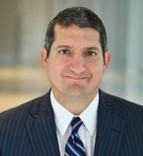 Michael J. Woods is the Chief Executive Officer and Chief Operating Officer of U.S.-based Big Sun Holdings Group Corporation (Big Sun). Big Sun is a member of the HN, Inc. family of companies (formerly Hyundai Business Solutions and Consulting, www.hncorp.world). Big Sun owns and operates Black Buffalo 3D Corporation (www.blackbuffalo.io), Flash Labs Corporation (www.flashlabs.io), Big Sun Modular, Big Sun Development, and ownership interests within Open World Residences in Switzerland. He is also the Chairman of the Board and President of Open World Residences (OWR) based in Zug, Switzerland. OWR specializes in real estate tokenization throughout Europe for affordable resort and residential property development.
Michael J. Woods is the Chief Executive Officer and Chief Operating Officer of U.S.-based Big Sun Holdings Group Corporation (Big Sun). Big Sun is a member of the HN, Inc. family of companies (formerly Hyundai Business Solutions and Consulting, www.hncorp.world). Big Sun owns and operates Black Buffalo 3D Corporation (www.blackbuffalo.io), Flash Labs Corporation (www.flashlabs.io), Big Sun Modular, Big Sun Development, and ownership interests within Open World Residences in Switzerland. He is also the Chairman of the Board and President of Open World Residences (OWR) based in Zug, Switzerland. OWR specializes in real estate tokenization throughout Europe for affordable resort and residential property development.
IW-5 : Non-Terrestrial Networks (NTN)
Wednesday, May 18 14:00 - 15:30 / Location: E5, Conference Room E, Coex
Organizer : Emilio Calvanese Strinati (CEA-Leti), Moon-Sik Lee (ETRI)
Presenters :
Wesley Eddy (Facebook) "TIP's Open RAN Approach for Non-Terrestrial Connectivity Solutions"
Nicolas Chuberre (Thales Alenya Space) "3GPP NTN Standardisation Roadmap"
Thomas Haustein (HHI) "Networks Detached from Ground – the Rise of NTN in 5G Advanced and 6G"
Joon-Gyu Ryu (ETRI) "What about Satellite Communication in 6G?"
Vincenzo Sciancalepore (NEC Laboratory) “Taming Aerial Communications with 6G Smart Surfaces”
Abstract :
In recent years, due to the development of innovative satellite launch vehicle technologies, the cost of launching and producing satellites has rapidly decreased. Consequently, a large number of operators have emerged to provide global communication services through low-orbit satellite clusters such as OneWeb, SpaceX, Project Kuiper, and Telesat. Also, the global market of unmanned aerial vehicles such as smart airlines, flying taxis (air taxis), and drones is expected to increase rapidly. The area of communication that provides Gbps grade internet service will be expanded to non-terrestrial networks (NTN) to support not only service enhancement and coverage extension on the ground, but also in a three-dimensional (3D) space and at sea. Therefore, terminals will be able to receive Gbps grade internet service anytime, anywhere. In order to provide such a service, B5G/6G NTN technologies for providing communication coverage in the 3D space are required beyond the limit of a ground-oriented mobile communication service. It is expected that it will be possible to provide reliable internet services to various moving vehicles in the air and on the ground through integrated satellite and terrestrial network technologies. The integrated satellite-terrestrial networks leverage on various technologies to make the architecture of heterogeneous networks operationally effective as seamless service coverage, robust service supporting ability, and high-efficiency performance. New handover schemes to tackle frequent handover due to satellite movement will be developed. The improvement of beam management will be required for mobility of satellites and aerial vehicles, long round-trip time (RTT), wide beam coverage, and various beam types. Antenna technologies for LEO satellite payload will be crucial. Also, the support of mobile edge cloud and edge intelligence through NTN connectivity will be important.
Biography :
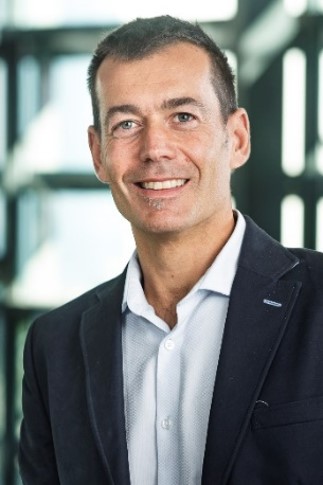
Emilio Calvanese Strinati graduated (2001,Msc) from the University of Rome ‘La Sapienza’, the obtained his Ph.D in 2005 (Telecom Paris). Since 2018 he holds the French Research Director Habilitation (HDR). He started working at Motorola Labs in Paris in 2002. Then in 2006 he joints CEA/LETI as a research engineer. From 2011 to 2016 he was the Smart Devices & Telecommunications European collaborative strategic programs Director. Between December 2016 and January 2020, he was the Smart Devices & Telecommunications Scientific and Innovation Director. Since February 2020 he is the Nanotechnologies and Wireless for 6G (New-6G) Program Director focusing on future 6G technologies. Since July 2018 he is the coordinator of the H2020 joint Europe and South Korea 5G-AllStar project. In 2021 he started the coordination of the H2020 European project RISE-6G, focusing on the design and operation of Reconfigurable Intelligent Surfaces in future high frequency 6G networks. E. Calvanese Strinati has published around 150 papers in international conferences, journals and books chapters, given more than 200 international invited talks, keynotes and tutorials. He received several best paper awards and is the main inventor or co-inventor of more than 70 patents.
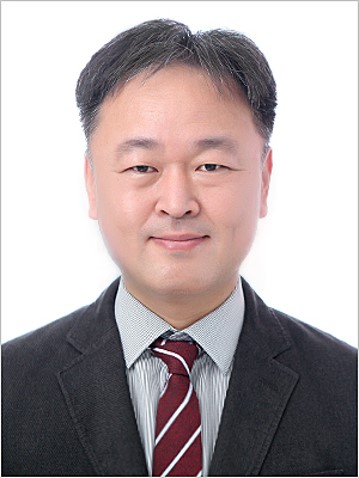 Moon-Sik Lee received the Ph.D. degree in mechatronics (electronic engineering) from Gwangju Institute of Science and Technology (GIST), Gwangju, Korea, in 2005. From April 2004 to August 2004, he was a Visiting Researcher with the Department of Electrical Engineering, University of California, Los Angeles. From February 2008 to February 2009, he was a Postdoctoral Scholar with the Department of Electrical Engineering, Stanford University, Stanford, CA. Since 2005, he has been a Principal Researcher with the Telecommunications & Media Research Laboratory, Electronics and Telecommunications Research Institute (ETRI), Daejeon, Korea, where he is currently the Director of the Wireless Distributed Communication Research Section. From 2014 to 2020, he was the Chair of the Standardization Strategy Map, Telecommunications Technology Association (TTA). Since 2020, he has been the Chair of the Open 5G Fronthaul WG, 5G Forum, Korea. He is the Executive Director of the Korean Institute of Communications and Information Sciences (KICS), Korea, and the Chair of the Daejeon and Chungnam Section, Institute of Electronics and Information Engineers (IEIE), Korea. Since 2013, he has been an Editor of ETRI Journal. His research interests are in 5G/6G mobile communications, 3D mobile communications & non-terrestrial networks (NTN), open RAN, BF/MIMO, array signal processing, and radar signal processing. He is a member of the IEEE, the KICS, and the O-RAN Alliance.
Moon-Sik Lee received the Ph.D. degree in mechatronics (electronic engineering) from Gwangju Institute of Science and Technology (GIST), Gwangju, Korea, in 2005. From April 2004 to August 2004, he was a Visiting Researcher with the Department of Electrical Engineering, University of California, Los Angeles. From February 2008 to February 2009, he was a Postdoctoral Scholar with the Department of Electrical Engineering, Stanford University, Stanford, CA. Since 2005, he has been a Principal Researcher with the Telecommunications & Media Research Laboratory, Electronics and Telecommunications Research Institute (ETRI), Daejeon, Korea, where he is currently the Director of the Wireless Distributed Communication Research Section. From 2014 to 2020, he was the Chair of the Standardization Strategy Map, Telecommunications Technology Association (TTA). Since 2020, he has been the Chair of the Open 5G Fronthaul WG, 5G Forum, Korea. He is the Executive Director of the Korean Institute of Communications and Information Sciences (KICS), Korea, and the Chair of the Daejeon and Chungnam Section, Institute of Electronics and Information Engineers (IEIE), Korea. Since 2013, he has been an Editor of ETRI Journal. His research interests are in 5G/6G mobile communications, 3D mobile communications & non-terrestrial networks (NTN), open RAN, BF/MIMO, array signal processing, and radar signal processing. He is a member of the IEEE, the KICS, and the O-RAN Alliance.
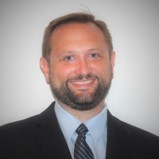 Wesley Eddy is working at Meta Connectivity, on contract, serving as the Community Technical Engagement Manager for the Telecom Infra Project (TIP) Non-Terrestrial Connectivity Solutions (NTCS) project group. He is the Chief Technologist at MTI Systems, where he has supported projects at Facebook, Google X/Loon, Telesat, the US Air Force, NASA Goddard Space Flight Center, and other government agencies. He is a networking and satellite communications systems expert, and works specifically on creating networking technology, architecture, and solutions for space environments and mission critical systems. He has participated in standards activities and been a chair and area director in the Internet Engineering Task Force (IETF), as well as working in the Consultative Committee for Space Data Systems (CCSDS), IEEE, Telecom Infra Project (TIP), and the O-RAN Alliance.
Wesley Eddy is working at Meta Connectivity, on contract, serving as the Community Technical Engagement Manager for the Telecom Infra Project (TIP) Non-Terrestrial Connectivity Solutions (NTCS) project group. He is the Chief Technologist at MTI Systems, where he has supported projects at Facebook, Google X/Loon, Telesat, the US Air Force, NASA Goddard Space Flight Center, and other government agencies. He is a networking and satellite communications systems expert, and works specifically on creating networking technology, architecture, and solutions for space environments and mission critical systems. He has participated in standards activities and been a chair and area director in the Internet Engineering Task Force (IETF), as well as working in the Consultative Committee for Space Data Systems (CCSDS), IEEE, Telecom Infra Project (TIP), and the O-RAN Alliance.
 Nicolas Chuberre graduated from “Ecole Supérieure d’Ingénieur en Electronique et Electrotechnique” in Paris. At Nokia & Alcatel he developed 2G cellular handsets & systems. He joined Thales Alenia Space to develop satellite payload equipment and design advanced Satellite Communication Systems. He has successfully carried out European collaborative research projects. Currently he is defining and developing Satellite Solutions for 5G. In addition, he is the lead representative of Thales in 3GPP TSG RAN where he is the rapporteur for satellite integration in 5G. He also chairs since 2006 the Satellite Communication and Navigation working group at ETSI (www.etsi.org).
Nicolas Chuberre graduated from “Ecole Supérieure d’Ingénieur en Electronique et Electrotechnique” in Paris. At Nokia & Alcatel he developed 2G cellular handsets & systems. He joined Thales Alenia Space to develop satellite payload equipment and design advanced Satellite Communication Systems. He has successfully carried out European collaborative research projects. Currently he is defining and developing Satellite Solutions for 5G. In addition, he is the lead representative of Thales in 3GPP TSG RAN where he is the rapporteur for satellite integration in 5G. He also chairs since 2006 the Satellite Communication and Navigation working group at ETSI (www.etsi.org).
 Thomas Haustein received the Dr.-Ing. (Ph.D.) degree in mobile communications from the University of Technology Berlin, Germany, in 2006. Since 1997, he was with the Fraunhofer Institute for Telecommunications, Heinrich Hertz Institute (HHI), Berlin, where he worked on wireless infrared systems and radio communications with multiple antennas and OFDM. He focused on real-time algorithms for baseband processing and advanced multiuser resource allocation. From 2006 till 2008, he was with Nokia Siemens Networks, where he conducted research for 4G-LTE early prototyping. Since 2009 he is heading the Wireless Communications Department at Fraunhofer HHI focusing on 5G-NR and Industrial Wireless and is actively involved in 3GPP standardization.
Thomas Haustein received the Dr.-Ing. (Ph.D.) degree in mobile communications from the University of Technology Berlin, Germany, in 2006. Since 1997, he was with the Fraunhofer Institute for Telecommunications, Heinrich Hertz Institute (HHI), Berlin, where he worked on wireless infrared systems and radio communications with multiple antennas and OFDM. He focused on real-time algorithms for baseband processing and advanced multiuser resource allocation. From 2006 till 2008, he was with Nokia Siemens Networks, where he conducted research for 4G-LTE early prototyping. Since 2009 he is heading the Wireless Communications Department at Fraunhofer HHI focusing on 5G-NR and Industrial Wireless and is actively involved in 3GPP standardization.
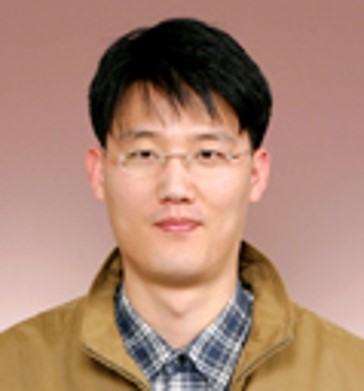 Joon-Gyu Ryu received the Ph.D. degree in radio sciences & engineering from the Chungnam National University, South Korea, in 2014. Since 2001, he was with ETRI where he worked on satellite communication & broadcasting system. Since 2020, he is Director of the Satellite Widearea Infra Research Lab. at ETRI focusing on next generation satellite communication and satellite IoT technology.
Joon-Gyu Ryu received the Ph.D. degree in radio sciences & engineering from the Chungnam National University, South Korea, in 2014. Since 2001, he was with ETRI where he worked on satellite communication & broadcasting system. Since 2020, he is Director of the Satellite Widearea Infra Research Lab. at ETRI focusing on next generation satellite communication and satellite IoT technology.
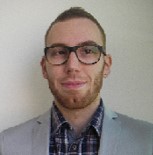 Vincenzo Sciancalepore received his M.Sc. degree in Telecommunications Engineering and Telematics Engineering in 2011 and 2012, respectively, whereas in 2015, he received a double Ph.D. degree. Currently, he is a Principal Researcher at NEC Laboratories Europe in Heidelberg, focusing his activity on network virtualization and network slicing challenges, and recently on Reconfigurable Intelligent Surfaces (RIS). He is the Chair of the IEEE ComSoc Emerging Technologies Initiative (ETI) on Reconfigurable Intelligent Surfaces (RIS) and an editor of IEEE Transactions on Wireless Communications. He is also the Technical Project Manager of a recently-funded H2020 project, namely RISE-6G.
Vincenzo Sciancalepore received his M.Sc. degree in Telecommunications Engineering and Telematics Engineering in 2011 and 2012, respectively, whereas in 2015, he received a double Ph.D. degree. Currently, he is a Principal Researcher at NEC Laboratories Europe in Heidelberg, focusing his activity on network virtualization and network slicing challenges, and recently on Reconfigurable Intelligent Surfaces (RIS). He is the Chair of the IEEE ComSoc Emerging Technologies Initiative (ETI) on Reconfigurable Intelligent Surfaces (RIS) and an editor of IEEE Transactions on Wireless Communications. He is also the Technical Project Manager of a recently-funded H2020 project, namely RISE-6G.
IW-6 : Toward AI-native 6G Networks
Wednesday, May 18 14:00 - 15:30 / Location: E6, Conference Room E, Coex
Organizer : Valerio Frascolla (Director of research and innovation, Intel Germany), Baoling Sheen (Principal engineer, Futurewei)
Presenters :
Valerio Frascolla (Director of research and innovation, Intel Germany) "AI at the Edge"
Won-Yeol Lee (VP, Head of Advanced Network Technology Department, Korea Telecom) "Artificial intelligence in 5G network: Current status and future perspective"
Charlie Zhang (SVP, Samsung) "Can AI make 5G and 6G Better?"
Johann Marquez-Barja (Professor at University of Antwerp and Head of the Wireless Cluster, imec IDLab Antwerp, Belgium) "AI-enhanced orchestration for 6G networks within the vehicular & mobility vertical"
Abstract :
In the past few years, thanks to the steady advances in technologies, we have witnessed the exploding growth of mobile data rates and number of connected devices that are supported by the existing communication networks. However, the always increasing millions of mobile apps and billions of sensors connected to the Internet of Everything (IoE) are bringing the current systems to their limit. With the deployment of 5G systems around the world and the 5G Advanced definition currently underway in standards bodies, work has recently started in defining the use cases and new enabling technologies that will shape 6G, i.e., the next generation of communication networks. 6G systems will provide unmatched high-quality, low-latency, high-reliability wireless services across humans and machines anytime and anywhere. These high expectations require innovations and advanced intelligence built into the next generation networks. With the advances in big data computing technology, AI already shows promising potentials in wireless industry, and we expect it will play an even more crucial role in 6G wireless networks in tasks that cannot be presented by a mathematical equation or with high computation complexity. In this Session, industry experts and renown research leaders, with experience in leveraging AI to solve real-world wireless communication problems, are invited to share their insightful thoughts and recent works to address the challenges ahead of us and discuss AI research directions toward future 6G wireless communication systems.
Biography :
 Valerio Frascolla (MSc and PhD in Electronic Engineering) is Director of Research and Innovation at Intel and had been working in different roles at Ancona University, Comneon, Infineon, as reviewer for the European Commission, and as independent evaluator for the Portuguese Foundation for Science and Technology. He is in the advisory board of the projects LIPS, ULTRAWAVE, FORTE, and INTERCONNECT, and has served in different roles in other 17 funded research projects. Valerio has expertise in wireless systems architecture and requirements management, standards bodies attendance (3GPP, ETSI, IEEE), project and program management, and coaching. He is author of 75+ publications, his main research interest being 5G and beyond system design, with focus on spectrum management, AI, and edge technologies. He serves as reviewer for 30+ journals, has participated in the TPC of 80+ conferences, and has a track record as organizer of Special Sessions, Workshops, and Panels at international conferences. Valerio is very active in the European ecosystem, being Board of Directors member of the BDVA association, representing Intel in 5G-IA (serving as chairman of the 5G Vertical Workgroup), in the ETP Networld Europe (serving as co-chair of the Enabling Technologies for Future Vertical Ecosystem Transformation Workgroup), in Digital Europe (R&I Workgroup), in AIOTI (serving as co-chairman of the Research and Collaboration Wok Group), and finally in the German Bitkom association.
Valerio Frascolla (MSc and PhD in Electronic Engineering) is Director of Research and Innovation at Intel and had been working in different roles at Ancona University, Comneon, Infineon, as reviewer for the European Commission, and as independent evaluator for the Portuguese Foundation for Science and Technology. He is in the advisory board of the projects LIPS, ULTRAWAVE, FORTE, and INTERCONNECT, and has served in different roles in other 17 funded research projects. Valerio has expertise in wireless systems architecture and requirements management, standards bodies attendance (3GPP, ETSI, IEEE), project and program management, and coaching. He is author of 75+ publications, his main research interest being 5G and beyond system design, with focus on spectrum management, AI, and edge technologies. He serves as reviewer for 30+ journals, has participated in the TPC of 80+ conferences, and has a track record as organizer of Special Sessions, Workshops, and Panels at international conferences. Valerio is very active in the European ecosystem, being Board of Directors member of the BDVA association, representing Intel in 5G-IA (serving as chairman of the 5G Vertical Workgroup), in the ETP Networld Europe (serving as co-chair of the Enabling Technologies for Future Vertical Ecosystem Transformation Workgroup), in Digital Europe (R&I Workgroup), in AIOTI (serving as co-chairman of the Research and Collaboration Wok Group), and finally in the German Bitkom association.
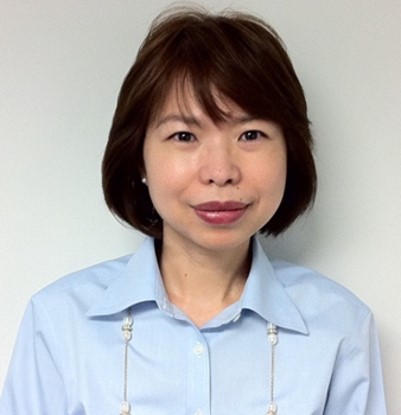 Baoling Sheen (MS and PhD in Computer Science) is a Principal Engineer at Futurewei Wireless Research and Standards, based in Chicago, IL, USA. She develops AI/ML-based solutions for real-world wireless communication problems like intelligent automation of network performance monitoring, network traffic forecast, RRM parameter optimization, scenario-based network planning, V2X and ML-based causal discovery. Recently, her research is focusing on AI-enabled 5G and future networks. Prior to joining Futurewei, she was a System Engineer/Architect with Alcatel-Lucent Technologies from 1997-2011, working on performance management and E2E KPI budget allocation for 3G and 4G LTE systems.
Baoling Sheen (MS and PhD in Computer Science) is a Principal Engineer at Futurewei Wireless Research and Standards, based in Chicago, IL, USA. She develops AI/ML-based solutions for real-world wireless communication problems like intelligent automation of network performance monitoring, network traffic forecast, RRM parameter optimization, scenario-based network planning, V2X and ML-based causal discovery. Recently, her research is focusing on AI-enabled 5G and future networks. Prior to joining Futurewei, she was a System Engineer/Architect with Alcatel-Lucent Technologies from 1997-2011, working on performance management and E2E KPI budget allocation for 3G and 4G LTE systems.
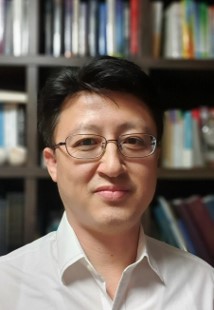 Won-Yeol Lee is vice president and head of Advanced Network Technology Department at KT. Since 2009, he has been with KT, where he has mainly worked on wireless communication systems and has especially contributed to the innovation and commercial launch of 5G networks. He also served as principal investigator for 5G AutoDrv project, a large-scale pilot project for 5G autonomous driving funded by Giga Korea Foundation. Currently he is leading 5G-advanced and 6G R&D projects including radio technologies, network architecture and standardization. His research interests are in the area of radio access technologies, open RAN, spectrum sharing, network AI, and vehicular network. Especially, he is widely recognized in the area of cognitive radio with over 14,000 citations according to Google Scholar. Prior to joining KT, from 1999 to 2004, he worked for LG Telecom (currently LG U+). He earned his B.S. and M.S. degrees from the Department of Electronics Engineering, Yonsei University, Seoul, Korea in 1997 and 1999, respectively. He received his Ph.D. degree in Electrical and Computer Engineering from Georgia Institute of Technology, Atlanta, GA. in 2009.
Won-Yeol Lee is vice president and head of Advanced Network Technology Department at KT. Since 2009, he has been with KT, where he has mainly worked on wireless communication systems and has especially contributed to the innovation and commercial launch of 5G networks. He also served as principal investigator for 5G AutoDrv project, a large-scale pilot project for 5G autonomous driving funded by Giga Korea Foundation. Currently he is leading 5G-advanced and 6G R&D projects including radio technologies, network architecture and standardization. His research interests are in the area of radio access technologies, open RAN, spectrum sharing, network AI, and vehicular network. Especially, he is widely recognized in the area of cognitive radio with over 14,000 citations according to Google Scholar. Prior to joining KT, from 1999 to 2004, he worked for LG Telecom (currently LG U+). He earned his B.S. and M.S. degrees from the Department of Electronics Engineering, Yonsei University, Seoul, Korea in 1997 and 1999, respectively. He received his Ph.D. degree in Electrical and Computer Engineering from Georgia Institute of Technology, Atlanta, GA. in 2009.
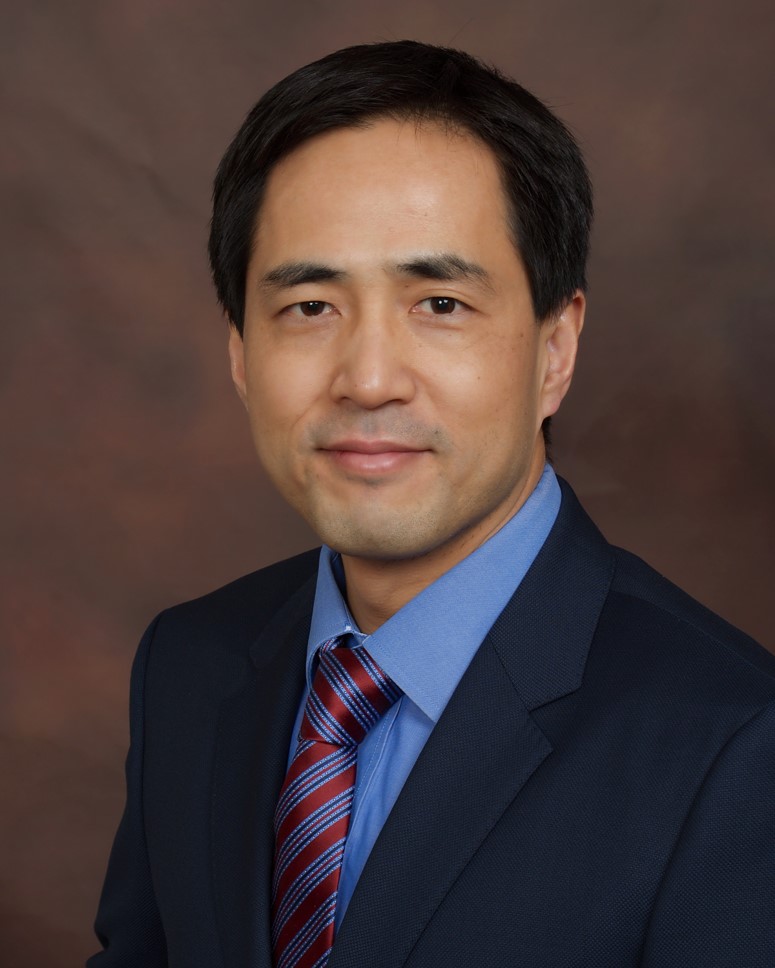 Charlie (Jianzhong) Zhang is SVP and head of the Standards and Mobility Innovation Team at Samsung Research America, where he leads research, prototyping, and standards for 5G/6G and future multimedia networks. He is also currently serving as the Chairman of the Board with FiRa Consortium, which is dedicated to the development of seamless user experiences using the secured fine ranging and positioning capabilities of interoperable UWB technologies. From 2009 to 2013, he served as the Vice Chairman of the 3GPP RAN1 working group and led development of LTE and LTE-Advanced technologies such as 3D channel modeling, UL-MIMO, CoMP, Carrier Aggregation for TD-LTE. He received his Ph.D. degree from the University of Wisconsin, Madison. Dr. Zhang is a Fellow of IEEE.
Charlie (Jianzhong) Zhang is SVP and head of the Standards and Mobility Innovation Team at Samsung Research America, where he leads research, prototyping, and standards for 5G/6G and future multimedia networks. He is also currently serving as the Chairman of the Board with FiRa Consortium, which is dedicated to the development of seamless user experiences using the secured fine ranging and positioning capabilities of interoperable UWB technologies. From 2009 to 2013, he served as the Vice Chairman of the 3GPP RAN1 working group and led development of LTE and LTE-Advanced technologies such as 3D channel modeling, UL-MIMO, CoMP, Carrier Aggregation for TD-LTE. He received his Ph.D. degree from the University of Wisconsin, Madison. Dr. Zhang is a Fellow of IEEE.
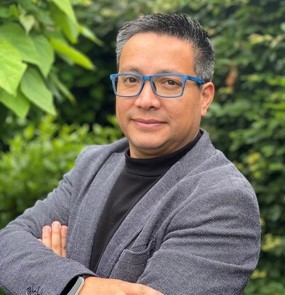 Johann Marquez-Barja is a Professor at University of Antwerp and in IMEC, Belgium. He is leading the Wireless Cluster at IDLab/imec Antwerp. He has been involved in several European research projects with leading roles, currently is the technical coordinator of H2020 5G Blueprint. He is a member of ACM, and a Senior member of the IEEE Communications Society, IEEE Vehicular Technology Society, and IEEE Education Society where he participates in the board of the Standards Committee. His main research interests are: 5G advanced architectures including edge computing; flexible and programmable future end-to-end networks; IoT communications and applications. He is also interested in vehicular communications, mobility, and smart cities deployments. Prof. Marquez-Barja is leading the Citylab Smart City testbed, part of the City of Things programme, and the SmartHighway testbed, both located in Antwerp, Belgium. Furthermore, he is interested and active on education development, being actively involved in different research actions to enhance engineering education, in particular remote experimentation in e-learning systems. Prof. Marquez-Barja has given several keynotes and invited talks in different major events, as well as received 30 awards in his career so far, and co-authored more than 180 published works including publications, editorials, and books. He is also serving as Editor and Guest editor for different International Journals, as well as participating in several Technical Programme and Organizing Committees for several worldwide conferences/congresses.
Johann Marquez-Barja is a Professor at University of Antwerp and in IMEC, Belgium. He is leading the Wireless Cluster at IDLab/imec Antwerp. He has been involved in several European research projects with leading roles, currently is the technical coordinator of H2020 5G Blueprint. He is a member of ACM, and a Senior member of the IEEE Communications Society, IEEE Vehicular Technology Society, and IEEE Education Society where he participates in the board of the Standards Committee. His main research interests are: 5G advanced architectures including edge computing; flexible and programmable future end-to-end networks; IoT communications and applications. He is also interested in vehicular communications, mobility, and smart cities deployments. Prof. Marquez-Barja is leading the Citylab Smart City testbed, part of the City of Things programme, and the SmartHighway testbed, both located in Antwerp, Belgium. Furthermore, he is interested and active on education development, being actively involved in different research actions to enhance engineering education, in particular remote experimentation in e-learning systems. Prof. Marquez-Barja has given several keynotes and invited talks in different major events, as well as received 30 awards in his career so far, and co-authored more than 180 published works including publications, editorials, and books. He is also serving as Editor and Guest editor for different International Journals, as well as participating in several Technical Programme and Organizing Committees for several worldwide conferences/congresses.
IW-7 : XR/AR Evolution and Commercialization Aspects
Thursday, May 19 14:00 - 15:30 / Location: E5, Conference Room E, Coex
Organizer : Thomas Stockhammer (Director, Technical Standards at Qualcomm, Germany)
Presenters :
Lola Awoniyi-Oteri (Principal Engineer at Qualcomm, San Diego) “The evolution of XR over 5G”
Jaeyeon Song (Director at Samsung, Seoul) “XR over 5G Beyond : direction of future media”
Joel Kim (Meta Platforms Inc., USA) "Surfing Metaverse with 5G and Beyond"
Mary-Luc Champel (Standards Director at Xiaomi, Beijing) “AR glasses : enablers and constraints”
Abstract :
With the increased adoption and take-off of 3GPP 5G-NR in commercial networks, interest in eXtended Reality (XR) devices including Augmented Reality (AR), Virtual Reality (VR) and Mixed Reality (MR) has also significantly increased. These devices would merge the world as experienced through text, images, videos, etc. thereby enhancing and augmenting real/quasi-real experiences in commercial applications. Since such augmentation is contingent on increased data rates and reduced latencies, 5G-NR is naturally poised to address these challenges. The scope of this session would be to present the state-of-the-art in XR evolution aspects as seen from a technology perspective in Release 18 (and beyond) of 5G-NR as these releases start to fructify. This session would also chart out the future scope of commercialization aspects in this area and present a well-rounded overview of this area including the opportunities and challenges in the road from paper design to products and commercialization. The speakers in this session include well-established researchers in XR with a fundamental understanding in the arenas of R&D, standardization and practical deployments.
Biography :
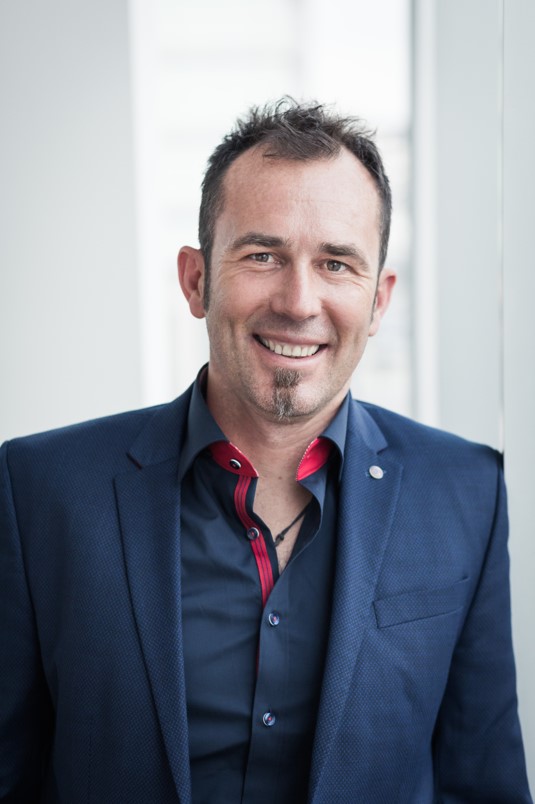 Thomas Stockhammer received the Dipl.-Ing. and Dr.-Ing. degrees from the Munich University of Technology, Munich, Germany. Thomas was Visiting Researcher at Rensselear Politechnical Institute (RPI), Troy, NY, USA and University of California San Diego (UCSD), San Diego, CA, USA. After acting as cofounder and CEO of Novel Mobile Radio (NoMoR) Research for 10 years and a consultant for Siemens mobile, BenQ mobile, LG Electronics and Digital Fountain, he joined Qualcomm in 2014 as Director Technical Standards. In his different roles, he co-authored more than 200 research publications and more than 200 patents and 1000s of contributions to standardization efforts. In his day job, he is the active and has leadership and rapporteur positions in 3GPP, DVB, MPEG, IETF, ATSC, CTA, ETSI and the DASH-Industry Forum in the area of multimedia communication, TV-distribution, 5G Broadcast, content delivery protocols, immersive media representation and adaptive streaming. Among others, he leads the MPEG-I and Scene Description efforts in MPEG, he is the chair of the DASH-IF Technical working group, the rapporteur of 3GPP Video and XR activities as well as the chairman of the DVB over 5G activity. Thomas also received the INCITS Technical Excellence Award 2013 for his MPEG DASH work, the 3GPP Excellence Ward 2017 for his work on Enhanced TV, the CTA Technology & Standards Achievement Award 2019 for his work on CTA WAVE Device Playback specification and the SIGMM Test of Time Paper Award 2021 the “Dynamic Adaptive Streaming over HTTP - Standards and Design Principles” paper. Thomas is a regular speaker and program committee member at events such as IBC Conference, DVB World, Mile High Video, Media Web Symposium or EBU’s BroadThinking.
Thomas Stockhammer received the Dipl.-Ing. and Dr.-Ing. degrees from the Munich University of Technology, Munich, Germany. Thomas was Visiting Researcher at Rensselear Politechnical Institute (RPI), Troy, NY, USA and University of California San Diego (UCSD), San Diego, CA, USA. After acting as cofounder and CEO of Novel Mobile Radio (NoMoR) Research for 10 years and a consultant for Siemens mobile, BenQ mobile, LG Electronics and Digital Fountain, he joined Qualcomm in 2014 as Director Technical Standards. In his different roles, he co-authored more than 200 research publications and more than 200 patents and 1000s of contributions to standardization efforts. In his day job, he is the active and has leadership and rapporteur positions in 3GPP, DVB, MPEG, IETF, ATSC, CTA, ETSI and the DASH-Industry Forum in the area of multimedia communication, TV-distribution, 5G Broadcast, content delivery protocols, immersive media representation and adaptive streaming. Among others, he leads the MPEG-I and Scene Description efforts in MPEG, he is the chair of the DASH-IF Technical working group, the rapporteur of 3GPP Video and XR activities as well as the chairman of the DVB over 5G activity. Thomas also received the INCITS Technical Excellence Award 2013 for his MPEG DASH work, the 3GPP Excellence Ward 2017 for his work on Enhanced TV, the CTA Technology & Standards Achievement Award 2019 for his work on CTA WAVE Device Playback specification and the SIGMM Test of Time Paper Award 2021 the “Dynamic Adaptive Streaming over HTTP - Standards and Design Principles” paper. Thomas is a regular speaker and program committee member at events such as IBC Conference, DVB World, Mile High Video, Media Web Symposium or EBU’s BroadThinking.
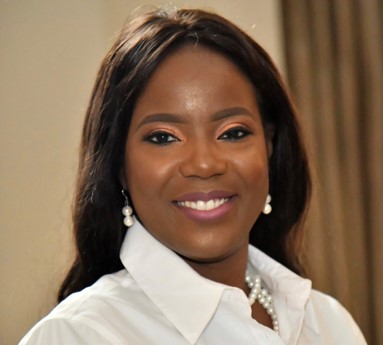
Lola Awoniyi-Oteri currently works as a Principal Systems Research & Development engineer within the Qualcomm Research organization. Lola is actively participating in 3GPP standardization of 5G and 5G advanced features for supporting XR traffic in cellular networks. Also, she is involved in standardization, research, and development of 5G millimeter wave technology and next generation wireless technologies. Her focus is on improving connectivity performance, enhancing the mobile user experience, enabling network mobility support, and reducing network and device power consumption. Her research interests span multiple Wide Area Network technologies, such as Cellular and Satellite networks; and a myriad of wireless Local Area Network technologies such as WiFi and Bluetooth networks. Prior to joining Qualcomm, she worked at Texas Instruments developing 3G mobile handsets. She received a B.S. degree in Electrical Engineering at Georgia Tech and M.S. and Ph.D. degrees in Electrical Engineering from Stanford University. Lola has authored over 300 worldwide patents and patent pending applications in the wireless communications field.
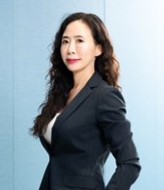
Jaeyeon Song has worked in the communication and media standards area since joining Samsung Electronics as a member of the standards team after completing her Ph.D in Electrical Engineering. From the start of her career, her work has focused on multimedia standards, with 20 years of expertise in mobile media, media delivery and services, and multimedia broadcasting. She is responsible for mobile media standards and is the head of delegation for media standard of Samsung. As the representative of Samsung, she has extensive leadership experience in leading not only the delegation, but also in contributing to the visions of multiple global standard bodies such as 3GPP, MPEG, DVB, and ATSC. She was MPEG-4 Editor, MPEG-I architecture co-Chair, and has also been the representative of Samsung as a board member in several industry forums such as OIPF and DASH-IF. Moving forward with this key opportunity, recently, she is very enthusiastic for 3GPP and SA4 to move towards Immersive media communication over 5G Advanced and beyond. For this, she is very active of AR/MR services and standardization, and she is Vice-Chairman of 3GPP SA4 from 2020.
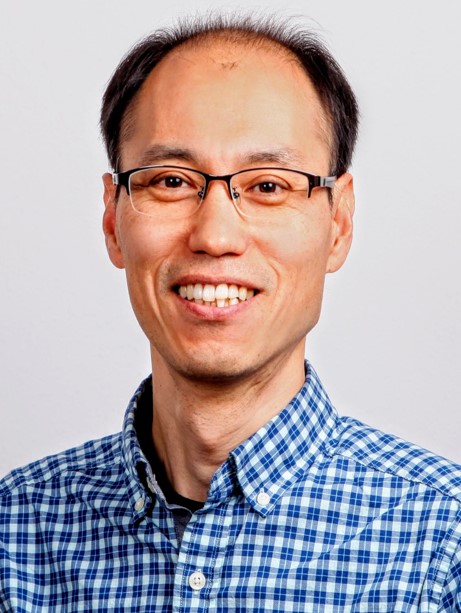 Joel Kim currently works as the head of the cellular technologies and ecosystems in the Reality Labs at Meta Platforms (formerly, Facebook), and is actively leading the engagement with global wireless standards organizations such as 3GPP, GSMA, ETSI BRAN, ITU-R, and IEEE to represent the company’s vision towards Metaverse. He is also heavily involved with the XR devices design, the practical development, and implementations of these devices, while building the appropriate global ecosystems, including the spectrum policy, to enable the envisioned XR use cases and the services. Before joining Meta Platforms, he worked at various companies in the mobile wireless industry for 20+ years, including Samsung Electronics, Intel, Marvell, Rohde-Schwarz and a couple of innovative start-ups. During his industry work, he took various key roles and responsibilities such as leading cellular modem chipset development, smartphone design and development, global wireless standardizations, and advanced wireless technology researches spanning 3/4/5G and now 6G. Joel received his Ph.D degree in EE from Yonsei University, Seoul, Korea, and served as a research scholar at graduate school of EECS at Stanford University, CA in the US. He is holding many patents in the wireless domains, and one of the key members of 5G and 6G consortiums including Hexa-X and NGA.
Joel Kim currently works as the head of the cellular technologies and ecosystems in the Reality Labs at Meta Platforms (formerly, Facebook), and is actively leading the engagement with global wireless standards organizations such as 3GPP, GSMA, ETSI BRAN, ITU-R, and IEEE to represent the company’s vision towards Metaverse. He is also heavily involved with the XR devices design, the practical development, and implementations of these devices, while building the appropriate global ecosystems, including the spectrum policy, to enable the envisioned XR use cases and the services. Before joining Meta Platforms, he worked at various companies in the mobile wireless industry for 20+ years, including Samsung Electronics, Intel, Marvell, Rohde-Schwarz and a couple of innovative start-ups. During his industry work, he took various key roles and responsibilities such as leading cellular modem chipset development, smartphone design and development, global wireless standardizations, and advanced wireless technology researches spanning 3/4/5G and now 6G. Joel received his Ph.D degree in EE from Yonsei University, Seoul, Korea, and served as a research scholar at graduate school of EECS at Stanford University, CA in the US. He is holding many patents in the wireless domains, and one of the key members of 5G and 6G consortiums including Hexa-X and NGA.
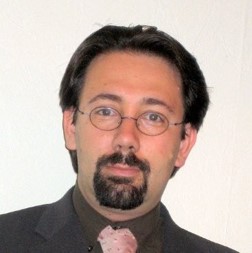 Mary-Luc Champel is Senior Standards Director for Media Coding and Delivery at Xiaomi since 2018. Prior to joining Xiaomi, Mary-Luc was Standards Director, System Project Leader and Principal Scientist at Technicolor. Mary-Luc is an influential contributor to many successful standardization project including DVB, ATSC, MPEG, 3GPP and DASH-IF.
Mary-Luc Champel is Senior Standards Director for Media Coding and Delivery at Xiaomi since 2018. Prior to joining Xiaomi, Mary-Luc was Standards Director, System Project Leader and Principal Scientist at Technicolor. Mary-Luc is an influential contributor to many successful standardization project including DVB, ATSC, MPEG, 3GPP and DASH-IF.
IW-8 : Next-Generation Unlicensed Spectrum Technologies
Thursday, May 19 14:00 - 15:30 / Location: E6, Conference Room E, Coex
Organizer : Li Tian (ZTE Corporation)
Presenters :
Carlos Cordeiro (Intel, U.S.) "Next Generation Wi-Fi 7 and Beyond"
Matthew Baker (Nokia, UK) "The role of unlicensed spectrum in 5G and beyond"
Yisheng Xue (Qualcomm, U.S.) "How does unlicensed spectrum with NR-U transform what 5G can do for you"
Kevin Lin (OPPO, China) "From 5G NR-U to SL-U and beyond in 3GPP”
Abstract :
Wi-Fi and cellular networks carry most of the wireless access traffic together and will continue to do so. So far, the cellular network is mainly for wide-area coverage and mobility, while Wi-Fi is mainly for indoor use thanks to its much lower deployment costs. This divide-and-conquer approach succeeds because the combination of licensed spectrum for cellular networks and unlicensed spectrum for Wi-Fi enables different models of spectrum use, different business models and different wireless infrastructure owners. However, the traditional boundaries that differentiated earlier generations of cellular and Wi-Fi are blurring, with 5G NR-U supporting specific enterprise requirements. This is not just about the number of connections, but also for the range of use cases that will grow and in directions beyond those we can envisage today. What will happen for the Next-Generation Unlicensed Spectrum Technologies? This session will gather experts actively participating in the field of unlicensed spectrum of Wi-Fi and cellular networks. New use cases of unlicensed spectrum technologies will be discussed, from traditional telecoms to emerging vertical applications. Topics in scope of this session will also include new technologies for Wi-Fi 7&8, 5G and beyond, such as innovative access schemes and co-existence schemes, as well as the regulation aspects regarding the introduction of unlicensed spectrum into cellular networks. The session will also explore the possible future deployment and business models of the two technologies, especially in the vertical industry scenarios, as well as the complementary/harmonization between the two technologies. We expect a lively exchange of views, since the relationship between the two unlicensed spectrum technologies is a bit diverse. It is hoped that new research and development activities will be stimulated by such discussions that will help define future technology evolution and business models.
Biography :
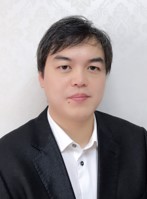 Li Tian is currently the Head of Standards Strategy Department of ZTE Corporation. He is actively involved in various global standardization organizations including 3GPP, ITU, IEEE. His research interests are in the field of 5G and beyond radio access technology, and his team contributed significantly to advanced technologies like AI/ML, future networks, video coding, automobile electronics, network security, etc. He is the first author of a book and contributed to multiple book chapters, with over 50 academic papers published and over 50 patents held globally. Li served as the co-chair of IWCMC2020 workshop and keynote chair of WCNC2021, he also served as the rapporteur for several 3GPP work items.
Li Tian is currently the Head of Standards Strategy Department of ZTE Corporation. He is actively involved in various global standardization organizations including 3GPP, ITU, IEEE. His research interests are in the field of 5G and beyond radio access technology, and his team contributed significantly to advanced technologies like AI/ML, future networks, video coding, automobile electronics, network security, etc. He is the first author of a book and contributed to multiple book chapters, with over 50 academic papers published and over 50 patents held globally. Li served as the co-chair of IWCMC2020 workshop and keynote chair of WCNC2021, he also served as the rapporteur for several 3GPP work items.
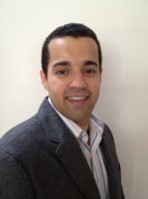 Carlos Cordeiro is the wireless CTO at Intel’s client group, where he is responsible for wireless connectivity technology strategy, standards, ecosystem development, and regulatory strategy. In the Wi-Fi Alliance, he is a member of the Board of Directors and serves as its Technical Advisor. Due to his contributions to wireless communications, Dr. Cordeiro received several awards including the prestigious Intel Inventor of the Year Award in 2016, the 2017 IEEE Standards Medallion, the IEEE Outstanding Engineer Award in 2011, and the IEEE New Face of Engineering Award in 2007. Dr. Cordeiro is the co-author of two textbooks on wireless published in 2006 and 2011, has published over 120 papers in the wireless area alone, and holds over 350 patents. He is the associate editor-in-chief of the IEEE Communications Standards Magazine, and has served as Editor of various journals including the IEEE Transactions on Mobile Computing, the IEEE Journal on Selected Areas in Communications, the IEEE Transactions on Wireless Communications, the IEEE Wireless Communication Letters and the ACM Mobile Computing and Communications Review journal. He has also served in the leadership and technical program committee of numerous conferences. Dr. Cordeiro is an IEEE Fellow.
Carlos Cordeiro is the wireless CTO at Intel’s client group, where he is responsible for wireless connectivity technology strategy, standards, ecosystem development, and regulatory strategy. In the Wi-Fi Alliance, he is a member of the Board of Directors and serves as its Technical Advisor. Due to his contributions to wireless communications, Dr. Cordeiro received several awards including the prestigious Intel Inventor of the Year Award in 2016, the 2017 IEEE Standards Medallion, the IEEE Outstanding Engineer Award in 2011, and the IEEE New Face of Engineering Award in 2007. Dr. Cordeiro is the co-author of two textbooks on wireless published in 2006 and 2011, has published over 120 papers in the wireless area alone, and holds over 350 patents. He is the associate editor-in-chief of the IEEE Communications Standards Magazine, and has served as Editor of various journals including the IEEE Transactions on Mobile Computing, the IEEE Journal on Selected Areas in Communications, the IEEE Transactions on Wireless Communications, the IEEE Wireless Communication Letters and the ACM Mobile Computing and Communications Review journal. He has also served in the leadership and technical program committee of numerous conferences. Dr. Cordeiro is an IEEE Fellow.
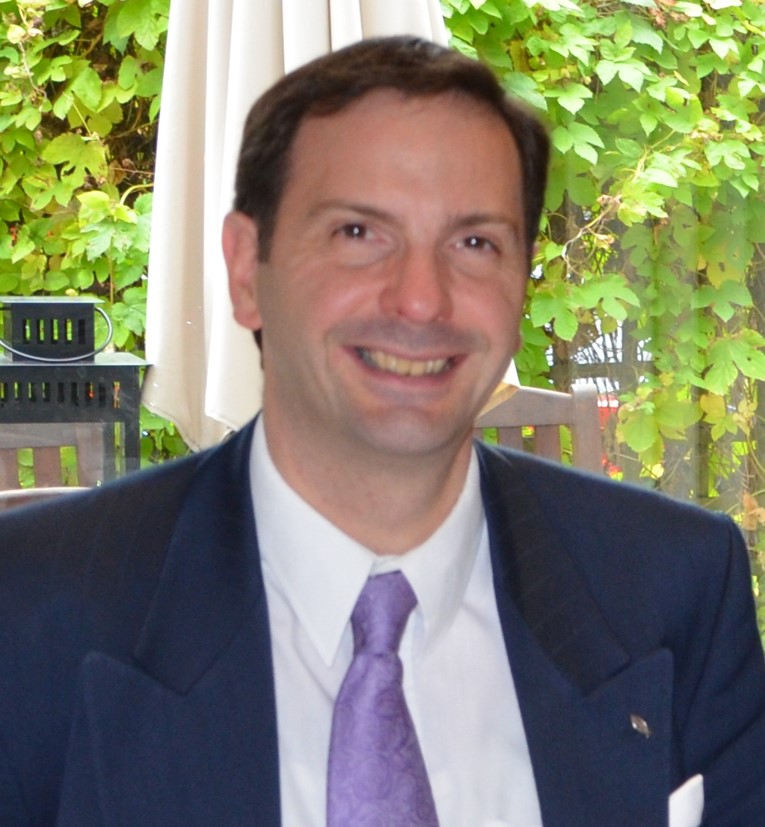 Matthew Baker is Head of Radio Physical Layer and Co-Existence Standardization at Nokia, and a Distinguished Member of Technical Staff. He has contributed to the standardization of UMTS/HSPA, LTE and 5G in 3GPP and held the posts of Chairman and subsequently Vice-Chairman of 3GPP TSG RAN WG1 between 2009 and 2017. He holds degrees in Engineering and Electrical and Information Sciences from the University of Cambridge, UK. He is a Chartered Engineer and a Member of the Institution of Engineering and Technology, and has been a Visiting Professor at the University of Reading, UK. He is co-editor of the book “LTE – The UMTS Long Term Evolution: From Theory to Practice” (Wiley, Second Edition 2012), has authored many papers and holds several hundred patents in the field of mobile communications.
Matthew Baker is Head of Radio Physical Layer and Co-Existence Standardization at Nokia, and a Distinguished Member of Technical Staff. He has contributed to the standardization of UMTS/HSPA, LTE and 5G in 3GPP and held the posts of Chairman and subsequently Vice-Chairman of 3GPP TSG RAN WG1 between 2009 and 2017. He holds degrees in Engineering and Electrical and Information Sciences from the University of Cambridge, UK. He is a Chartered Engineer and a Member of the Institution of Engineering and Technology, and has been a Visiting Professor at the University of Reading, UK. He is co-editor of the book “LTE – The UMTS Long Term Evolution: From Theory to Practice” (Wiley, Second Edition 2012), has authored many papers and holds several hundred patents in the field of mobile communications.
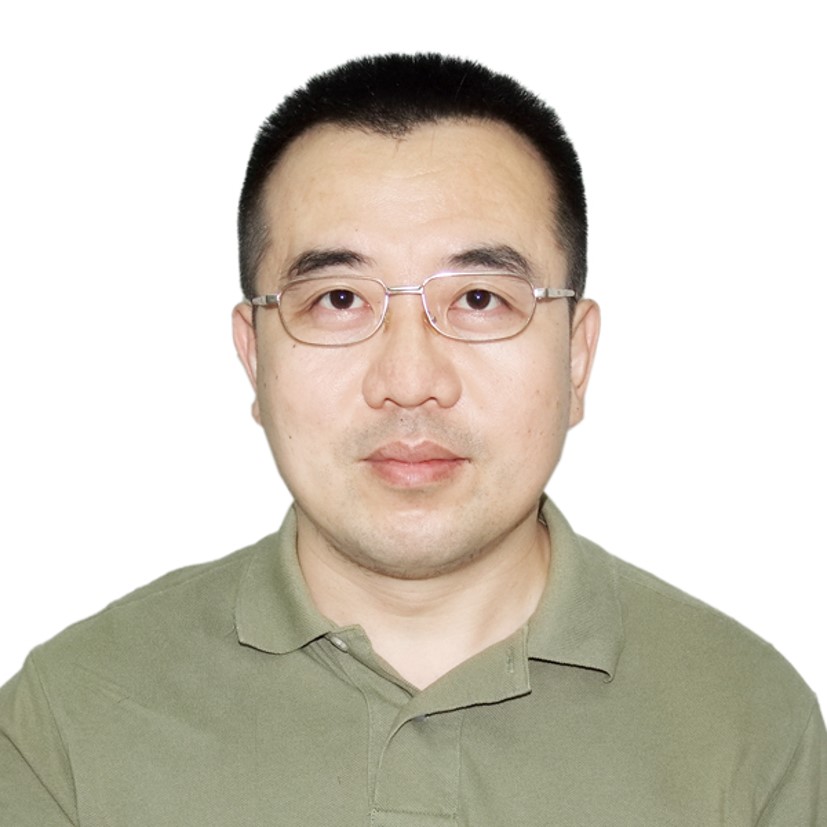
Yisheng Xue received all his degrees in electronic engineering from Tsinghua University, Beijing, China, in 1994, 1998, and 2002, respectively. From August 2002 to October 2004, he was a Postdoctoral Researcher with the University of Duisburg–Essen, Duisburg, Germany. From November 2004 to June 2005, he held a research associate position with the Department of Electrical and Computer Engineering, McGill University, Montreal, Canada. Between August 2005 to August 2007, he was a Senior Research Scientist with Siemens Corporate Technology, Beijing, China. He was with the Motorola Labs, Beijing, between August 2007 and September 2008. Since September 2008, he has been with Qualcomm, and now he is a Principal Engineer/Manager. His research interests include protocol design and signal processing for wireless and wireline communications. He has contributed to the development of WCDMA, HSUPA, 10GBase-T, LTE-LAA, and NR-U, on standard track and product track.
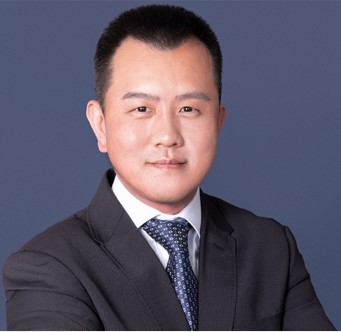
Kevin Lin is a 3GPP technology consultant and expert at OPPO. He received the B.E. in communication engineering, graduate certificate in telecommunication engineering and Ph.D. degrees from RMIT University, Melbourne, Australia, in 2000, 2002, and 2006, respectively. In 2001, he started working on 3G-UMTS/HSPA transmit diversity and beamforming schemes, and later joined NEC after completing his Ph.D. research in 2006 to work on design and verification of signal processing algorithms 4G-LTE handset products. Between 2009 and present, he worked on various 4G-LTE and 5G-NR topics, and contributed to 3GPP specifications across 3GPP TSG RAN WG1, WG4 and plenary. He served as feature lead for R17 sidelink enhancement work item in 3GPP RAN1 and currently leads RAN1 standards team for sidelink technology development in OPPO. His research interests include NR and sidelink in unlicensed spectrum, UE power saving, and V2X. Besides numerous research and conference papers, and hundreds of 3GPP technical contributions, he co-authored several chapters in the book “5G NR and Enhancements from R15 to R16” (Elsevier, 1st Edition 2021).
IW-9 : Evolution of Edge Computing and Edge AI towards 6G
Thursday, May 19 16:00 - 17:30 / Location: Auditorium, Coex
Organizer : Kaibin Huang (Dept. of EEE, University of Hong Kong, Hong Kong)
Presenters :
Jinguk Jeong (Head of SRR, Corporate VP/Head of R&D Center, Samsung Electronics, Seoul, South Korea) "A lightweight Edge AI system for Enterprise"
Merouane Debbah (Chief Researcher, the Technology Innovation Institute, Abu Dhabi) "Edge AI for Wireless: Opportunities and Challenges"
Justin Chuang (Vice President, Communications Technologies, Hong Kong Applied Science and Technology Research Institute) "Network Edge Intelligence for emerging applications in 5G and beyond”
Yanhui Geng (Director, Huawei Noah’s Ark Lab, Hong Kong) "Machine learning in advanced wireless communication”
Abstract :
Mobile edge computing (MEC) is a 5G/6G paradigm in communication and computing. The main feature of MEC is to push mobile computing, AI, control, and storage to the network edge (e.g., servers near base stations and access points) so as to enable intelligent, computation-intensive, and latency-critical applications at the resource-limited mobile devices. The promised gains of MEC have motivated extensive efforts by both the academia and industry on developing relevant technologies. In particular, MEC will provide a platform for realizing edge intelligence in 6G systems. In this session, several leading researchers from the industry will discuss the latest advancements in edge computing and edge AI in the areas and how relevant technologies will impact the ongoing 6G evolution.
Biography :
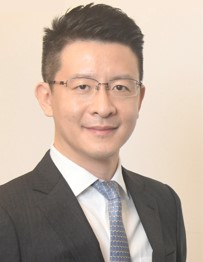 Kaibin Huang (Fellow, IEEE) received the B.Eng. and M.Eng. degrees from the National University of Singapore and the Ph.D. degree from The University of Texas at Austin, all in electrical engineering. He is currently an Associate Professor with the Department of Electrical and Electronic Engineering, The University of Hong Kong, Hong Kong. He received the IEEE Communication Society’s 2021 Best Survey Paper, 2019 Best Tutorial Paper, 2019 Asia–Pacific Outstanding Paper, 2015 Asia–Pacific Best Paper Award, and the best paper awards at IEEE GLOBECOM 2006 and IEEE/CIC ICCC 2018. He received the Outstanding Teaching Award from Yonsei University, South Korea, in 2011. He has been named as a Highly Cited Researcher by the Clarivate Analytics in 2019-2021 and awarded a Research Fellowship by Hong Kong Research Grants Council. He served as the Lead Chair for the Wireless Communications Symposium of IEEE Globecom 2017 and the Communication Theory Symposium of IEEE GLOBECOM 2014, and the TPC Co-chair for IEEE PIMRC 2017 and IEEE CTW 2013. He is also an Executive Editor of IEEE TRANSACTIONS ON WIRELESS COMMUNICATIONS, an Associate Editor of IEEE JOURNAL ON SELECTED AREAS IN COMMUNICATIONS, and an Area Editor for IEEE TRANSACTIONS ON GREEN COMMUNICATIONS AND NETWORKING. Previously, he served on the Editorial Board for IEEE WIRELESS COMMUNICATIONS LETTERS. He has guest edited special issues of IEEE JOURNAL ON SELECTED AREAS IN COMMUNICATIONS, IEEE JOURNAL OF SELECTED TOPICS IN SIGNAL PROCESSING, and IEEE Communications Magazine. He is also a Distinguished Lecturer of the IEEE Communications Society and the IEEE Vehicular Technology Society.
Kaibin Huang (Fellow, IEEE) received the B.Eng. and M.Eng. degrees from the National University of Singapore and the Ph.D. degree from The University of Texas at Austin, all in electrical engineering. He is currently an Associate Professor with the Department of Electrical and Electronic Engineering, The University of Hong Kong, Hong Kong. He received the IEEE Communication Society’s 2021 Best Survey Paper, 2019 Best Tutorial Paper, 2019 Asia–Pacific Outstanding Paper, 2015 Asia–Pacific Best Paper Award, and the best paper awards at IEEE GLOBECOM 2006 and IEEE/CIC ICCC 2018. He received the Outstanding Teaching Award from Yonsei University, South Korea, in 2011. He has been named as a Highly Cited Researcher by the Clarivate Analytics in 2019-2021 and awarded a Research Fellowship by Hong Kong Research Grants Council. He served as the Lead Chair for the Wireless Communications Symposium of IEEE Globecom 2017 and the Communication Theory Symposium of IEEE GLOBECOM 2014, and the TPC Co-chair for IEEE PIMRC 2017 and IEEE CTW 2013. He is also an Executive Editor of IEEE TRANSACTIONS ON WIRELESS COMMUNICATIONS, an Associate Editor of IEEE JOURNAL ON SELECTED AREAS IN COMMUNICATIONS, and an Area Editor for IEEE TRANSACTIONS ON GREEN COMMUNICATIONS AND NETWORKING. Previously, he served on the Editorial Board for IEEE WIRELESS COMMUNICATIONS LETTERS. He has guest edited special issues of IEEE JOURNAL ON SELECTED AREAS IN COMMUNICATIONS, IEEE JOURNAL OF SELECTED TOPICS IN SIGNAL PROCESSING, and IEEE Communications Magazine. He is also a Distinguished Lecturer of the IEEE Communications Society and the IEEE Vehicular Technology Society.

Jinguk Jeong has led several R&D teams for researching on Internet of Things and Communication Technologies such as DLNA, UPnP, Wi-Fi Direct and so on at Samsung Electronics. He worked as Lead Architect in IoTivity open source project hosted by Linux Foundation. For 2 years, in 2019~2020, he served as Samsung representative in the technical advisory council of LF Edge open source project. He is a corporate vice president of Samsung electronics. At present, he is a head of advanced solution team focusing on developing 5G related software and advanced communication solutions.
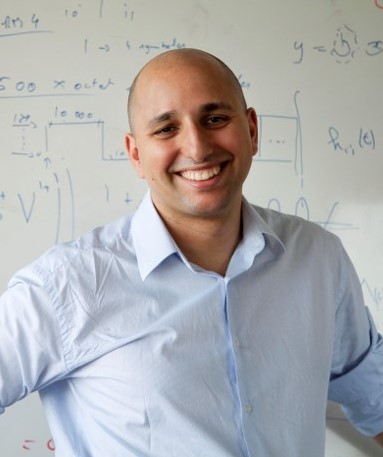
Mérouane Debbah is Chief Researcher at the Technology Innovation Institute in Abu Dhabi. He is an Adjunct Professor with the Department of Machine Learning at the Mohamed Bin Zayed University of Artificial Intelligence. He received the M.Sc. and Ph.D. degrees from the Ecole Normale Supérieure Paris-Saclay, France. He was with Motorola Labs, Saclay, France, from 1999 to 2002, and also with the Vienna Research Center for Telecommunications, Vienna, Austria, until 2003. From 2003 to 2007, he was an Assistant Professor with the Mobile Communications Department, Institut Eurecom, Sophia Antipolis, France. In 2007, he was appointed Full Professor at CentraleSupelec, Gif-sur-Yvette, France. From 2007 to 2014, he was the Director of the Alcatel-Lucent Chair on Flexible Radio. From 2014 to 2021, he was Vice-President of the Huawei France Research Center. He was jointly the director of the Mathematical and Algorithmic Sciences Lab as well as the director of the Lagrange Mathematical and Computing Research Center. Since 2021, he is leading the AI & Telecom Systems center at the Technology Innovation Institute. He has managed 8 EU projects and more than 24 national and international projects. His research interests lie in fundamental mathematics, algorithms, statistics, information, and communication sciences research. He is an IEEE Fellow, a WWRF Fellow, a Eurasip Fellow, an AAIA Fellow, an Institut Louis Bachelier Fellow and a Membre émérite SEE. He was a recipient of the ERC Grant MORE (Advanced Mathematical Tools for Complex Network Engineering) from 2012 to 2017. He was a recipient of the Mario Boella Award in 2005, the IEEE Glavieux Prize Award in 2011, the Qualcomm Innovation Prize Award in 2012, the 2019 IEEE Radio Communications Committee Technical Recognition Award and the 2020 SEE Blondel Medal. He received more than 20 best paper awards, among which the 2007 IEEE GLOBECOM Best Paper Award, the Wi-Opt 2009 Best Paper Award, the 2010 Newcom++ Best Paper Award, the WUN CogCom Best Paper 2012 and 2013 Award, the 2014 WCNC Best Paper Award, the 2015 ICC Best Paper Award, the 2015 IEEE Communications Society Leonard G. Abraham Prize, the 2015 IEEE Communications Society Fred W. Ellersick Prize, the 2016 IEEE Communications Society Best Tutorial Paper Award, the 2016 European Wireless Best Paper Award, the 2017 Eurasip Best Paper Award, the 2018 IEEE Marconi Prize Paper Award, the 2019 IEEE Communications Society Young Author Best Paper Award, the 2021 Eurasip Best Paper Award, the 2021 IEEE Marconi Prize Paper Award as well as the Valuetools 2007, Valuetools 2008, CrownCom 2009, Valuetools 2012, SAM 2014, and 2017 IEEE Sweden VT-COM-IT Joint Chapter best student paper awards. He is an Associate Editor-in-Chief of the journal Random Matrix: Theory and Applications. He was an Associate Area Editor and Senior Area Editor of the IEEE TRANSACTIONS ON SIGNAL PROCESSING from 2011 to 2013 and from 2013 to 2014, respectively. From 2021 to 2022, he serves as an IEEE Signal Processing Society Distinguished Industry Speaker.
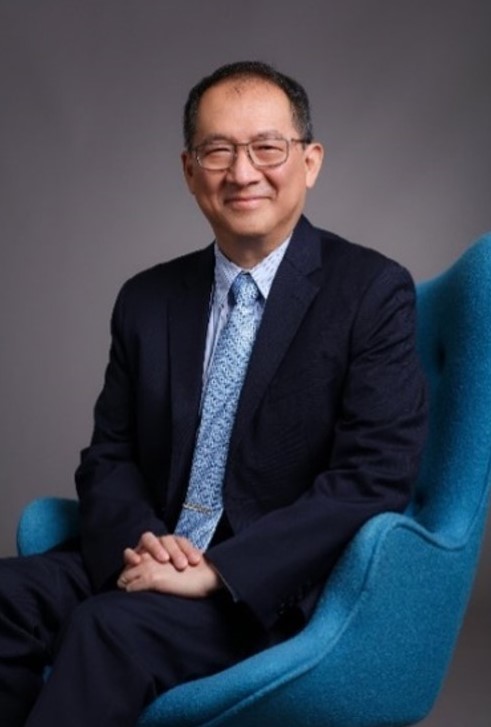 Justin Chuang joined ASTRI in December 2011 with nearly three decades of experiences in research, teaching, development, and engineering in communications technologies. He received BSc in Electrical Engineering from National Taiwan University in 1977, and MSc and PhD, also in Electrical Engineering, from Michigan State University in 1980 and 1983 respectively. He was elected an IEEE Fellow in 1997. Dr Chuang has held various positions in several multinational organizations including Broadcom, AT&T, Bellcore, and General Electric. Furthermore, he has also served as a Professor in the Department of Electronic & Computer Engineering of the Hong Kong University of Science and Technology (HKUST) from 1993 to 1996. Dr Chuang is experienced in taking research through engineering to commercialization for wireless and 2G to 5G cellular systems, from chipsets to platform solutions and intelligent applications. At ASTRI, Dr Chuang and his team are leveraging the collaborative efforts among government, industry, university, and research organizations to drive the advancement and commercialization of enabling technologies for 4G, 5G and beyond.
Justin Chuang joined ASTRI in December 2011 with nearly three decades of experiences in research, teaching, development, and engineering in communications technologies. He received BSc in Electrical Engineering from National Taiwan University in 1977, and MSc and PhD, also in Electrical Engineering, from Michigan State University in 1980 and 1983 respectively. He was elected an IEEE Fellow in 1997. Dr Chuang has held various positions in several multinational organizations including Broadcom, AT&T, Bellcore, and General Electric. Furthermore, he has also served as a Professor in the Department of Electronic & Computer Engineering of the Hong Kong University of Science and Technology (HKUST) from 1993 to 1996. Dr Chuang is experienced in taking research through engineering to commercialization for wireless and 2G to 5G cellular systems, from chipsets to platform solutions and intelligent applications. At ASTRI, Dr Chuang and his team are leveraging the collaborative efforts among government, industry, university, and research organizations to drive the advancement and commercialization of enabling technologies for 4G, 5G and beyond.
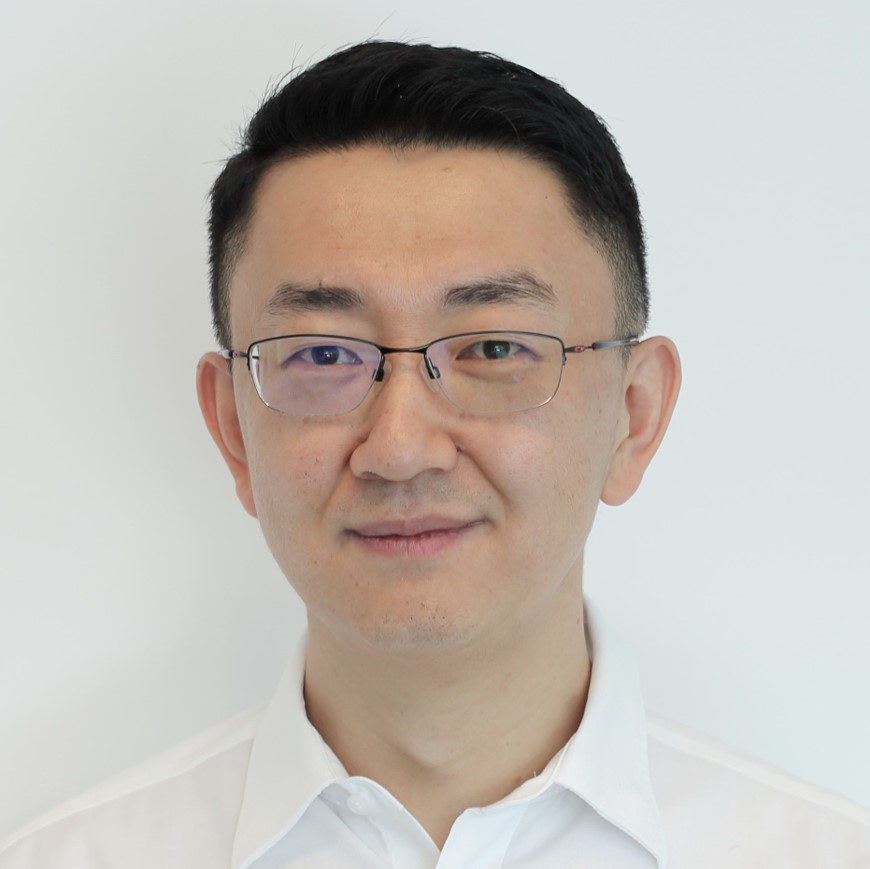
Yanhui Geng is the director of Huawei Noah’s Ark Lab - Hong Kong. Before that, he was the director of Huawei Montreal Research Center from 2017 to 2020, and was a principal researcher at Huawei Noah's Ark Lab Hong Kong from 2013 to 2017. He received his B.Eng. and M.Eng. in Electronic Engineering and Information Science from the University of Science and Technology of China (USTC) in 2002 and 2005, respectively. He got his Ph.D. degree in Electrical and Electronic Engineering from the University of Hong Kong (HKU) in 2009. Before joining Huawei, he was a Post-Doctoral Research Fellow at HKU from 2009 to 2012, and was a Senior Scientific Engineer at the Hong Kong Applied Science and Technology Research Institute (ASTRI) from 2012 to 2013. His research interests include artificial intelligence, machine learning, big data analytics, SDN (Software-Defined Networks), and data-center networking. He has filed over 20 patents globally and he has over 30 publications on top journals and conferences, including NeurIPS, AISTATS, ICDM, AAMAS, IEEE Internet of Things Journal, IEEE International Conference on Big Data, Springer Journal of Data Mining and Knowledge Discovery, ACM Sigcomm, IEEE/ACM Transactions on Networking, IEEE Transactions on Parallel and Distributed Systems, IEEE Infocom, ICNP, ICDCS, etc. He has received numerous awards, including IEEE ICC 2010 Best Paper Award, Chinese Academy of Science President Award, Excellent Postgraduate of Anhui Province Award, Excellent Postgraduate of USTC Award, USTC Outstanding Student Scholarship, Lenovo Scholarship, etc.






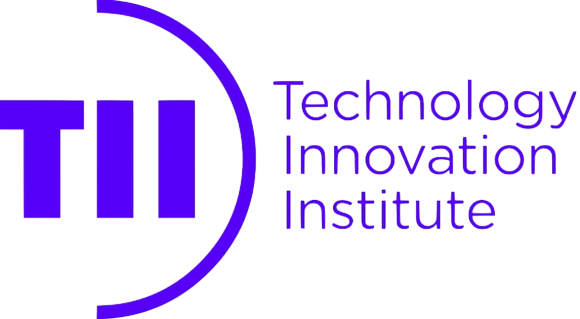
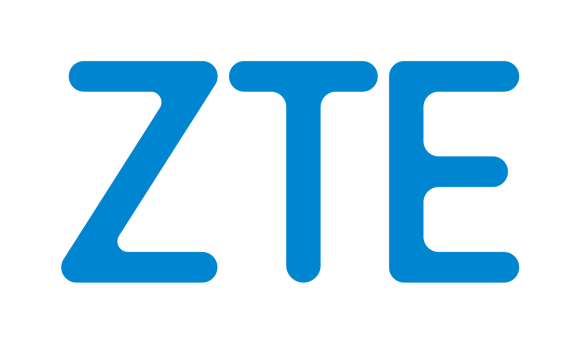
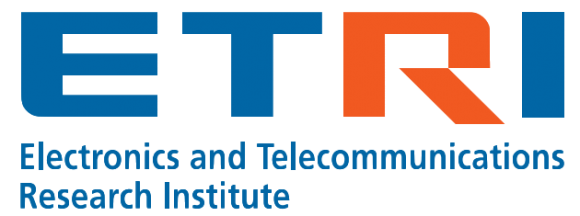
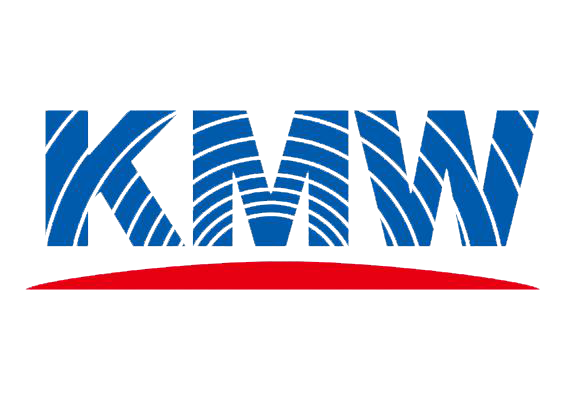

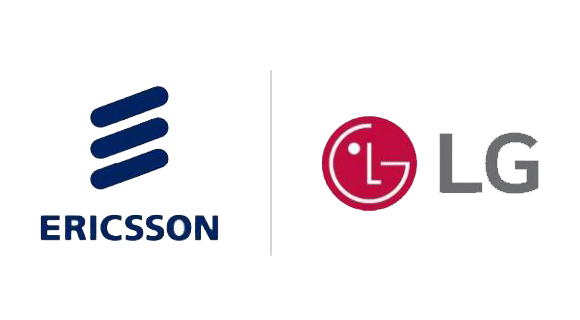


_01.png%3Fitok=vyvEGhfM)

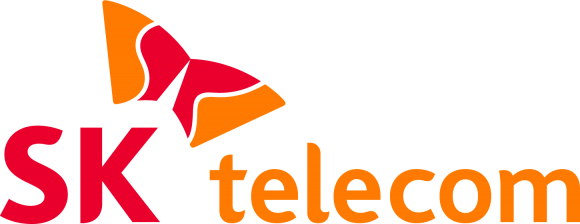


.png%3Fitok=Yj8Y43po)
